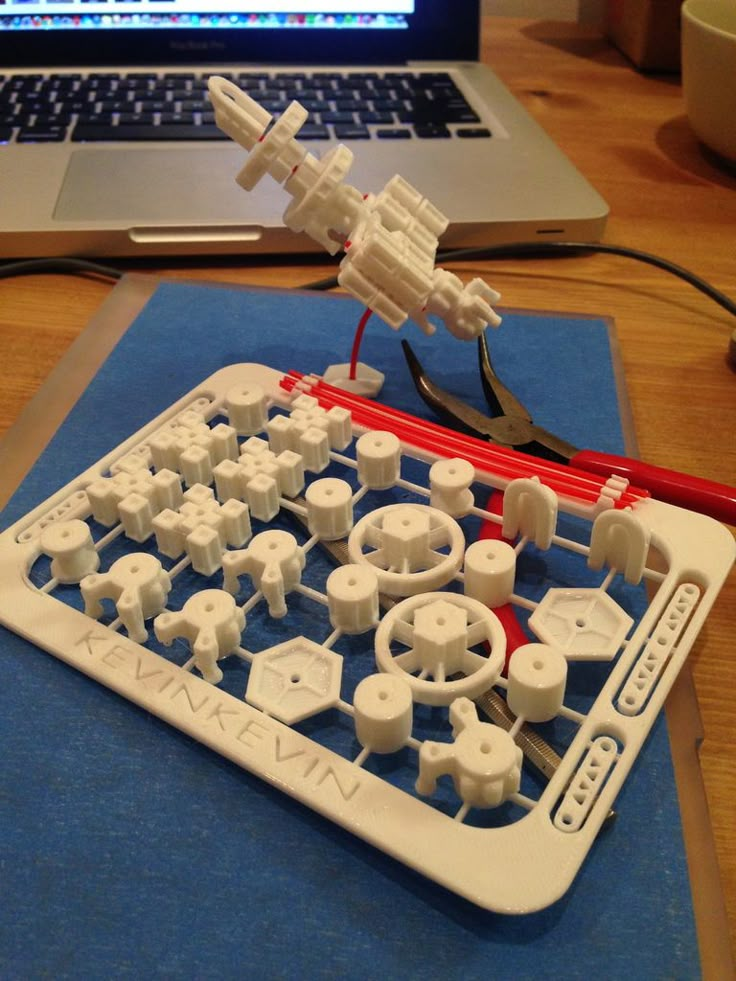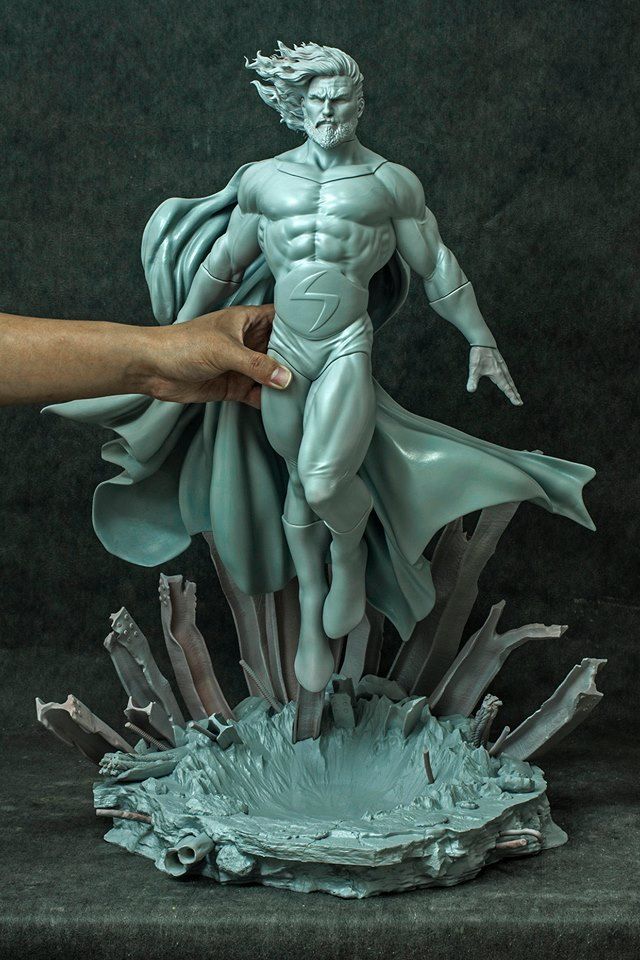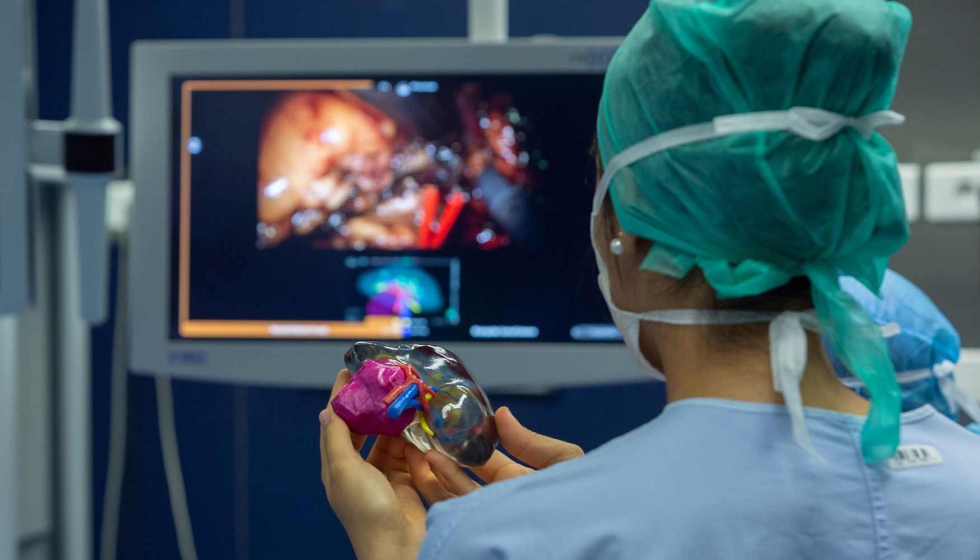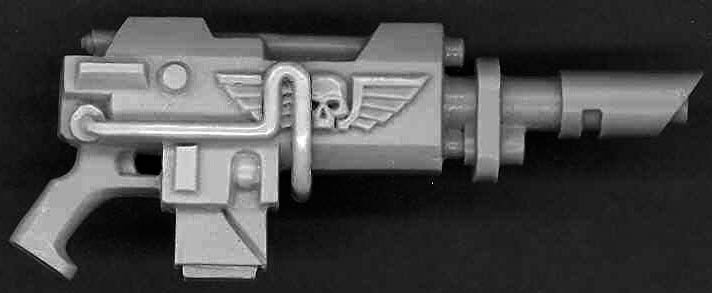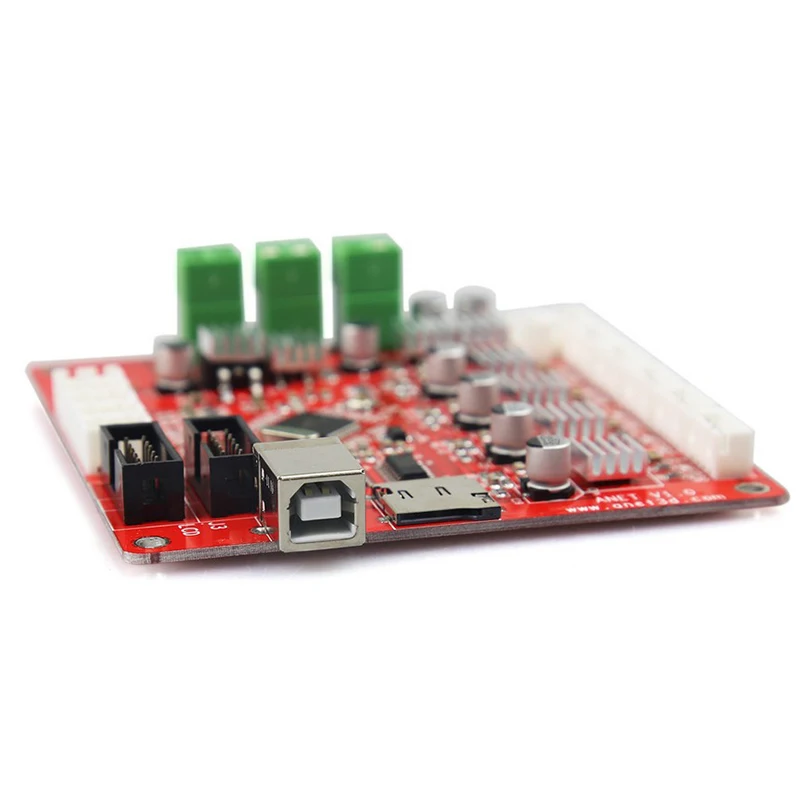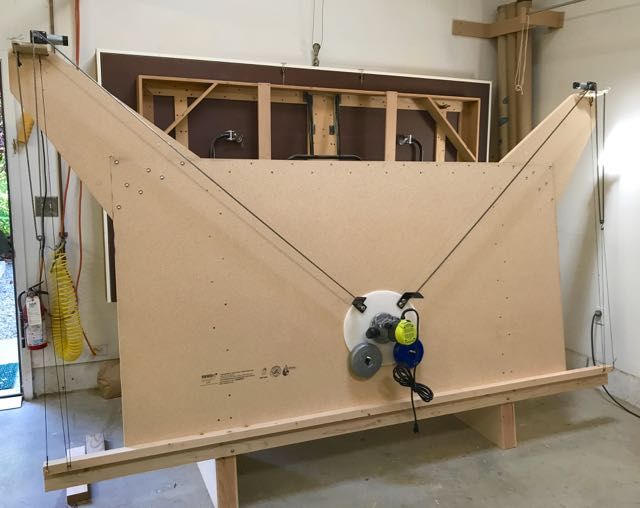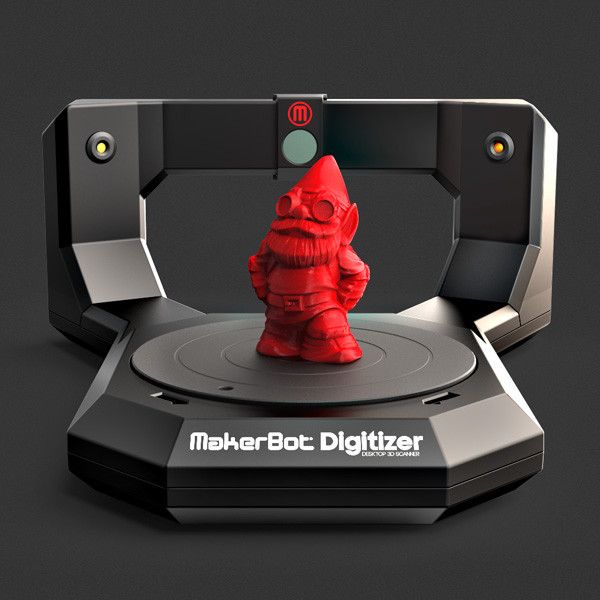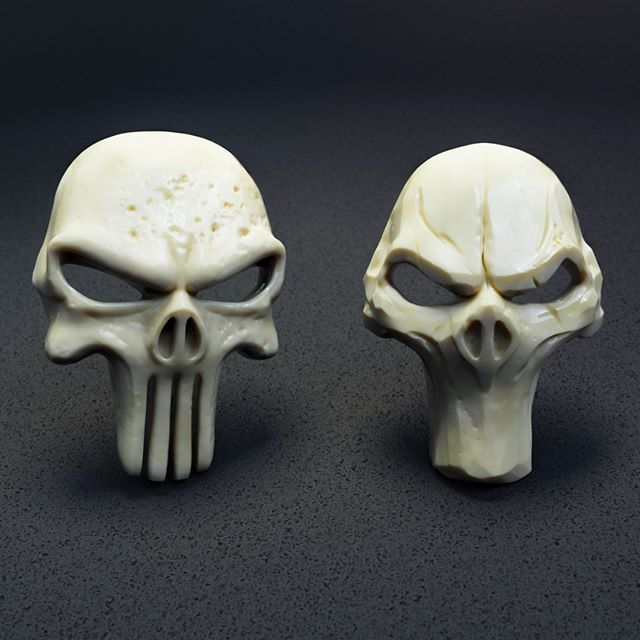Vitronic vitus 3d body scanner
Vitronic Vitus 3D body scanner Product Review
Estimated reading time: mins
- Last updated: 15.06.2020
- Product Review
- Swann Rack
Vitronic Vitus 3D Scanner Review 02:43
At Vitronic in Wiesbaden, we tested the 3D body scanner “Vitronic Vitus”. This body scanner was developed primarily for the clothing industry to capture people’s body measurements quickly. Besides body measurements, this 3D scanner also captures color information, and thus, established itself for creating 3D figures.
Table of Contents
Fun fact: Vitronic is known in Germany for the production of radar systems for traffic surveillance—
they specialize in speed cameras.
The Vitronic Vitus is a 3D scanner that enables the fast and contactless capturing of 3D body scans.
Immediately after the 3D scanning process, a color 3D model can be exported. The Vitus is a
structured-light scanner that projects an infrared line pattern onto the person to be scanned. In
contrast to photogrammetry, structured-light scanning has the advantage of providing extremely
accurate measurements.
Differences Between Photogrammetry and Structured-light Scanning
Photogrammetry
In photogrammetry, we use about 70 cameras in a scan cabin, which trigger simultaneously. This
results in a photoset, that is subsequently calculated into a 3D model. Unfortunately, no direct
scaling of the 3D model is possible. Therefore, the person to be scanned must take a measuring stick
with him/her into the cabin to enable a subsequent scaling.
Structured-light Scanning
In structured-light scanning, a stripe pattern is projected onto the surface of the object, which is
recorded by two stereo cameras.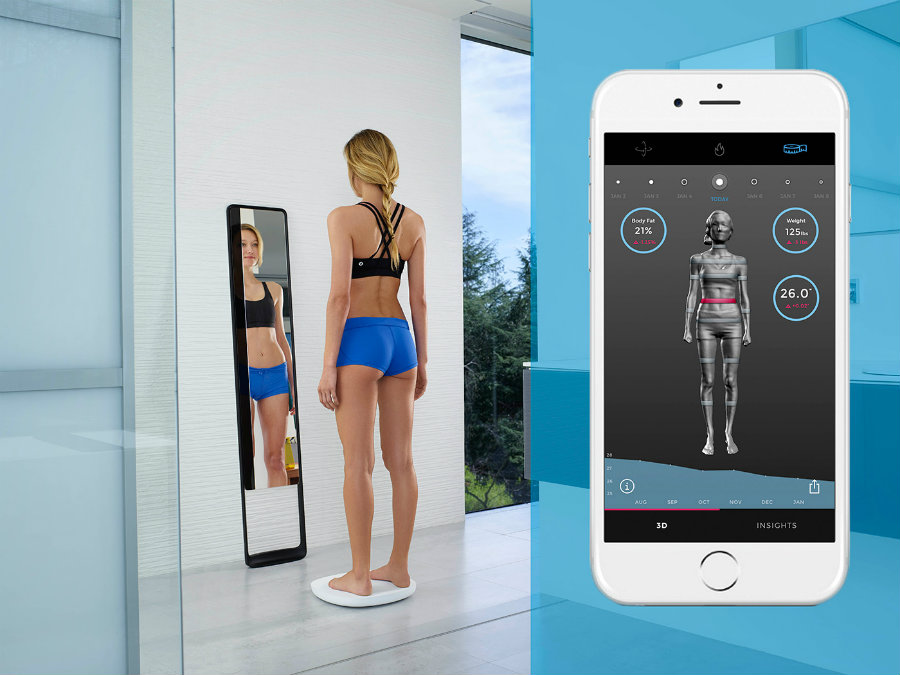 A 3D model can be calculated from the distortion of this pattern.
A 3D model can be calculated from the distortion of this pattern.
The scaling is done directly during the scanning process. The Vitronic Vitus is a structured-light
scanner.
How Does the Vitronic Vitus Work?
The Vitronic Vitus consists of a scan cabin and a pedestal for the person to be scanned. In the
corners of the scan cabin, there are four sensor columns with sensor slides, on each of which are
two cameras and a projector for the structured-light.
The scan volume of the Vitronic Vitus is approx. 1 m in diameter and approx. 2 m in height.
Measuring with the Vitus takes between 10 and 14 seconds. For scanning, the person stands on the
pedestal in the cabin. It is important that the person remains still during the entire 3D scanning
process to ensure an exact measurement.
During the 3D-scanning process, the sensor slides move from top to bottom and capture the person
in 3D.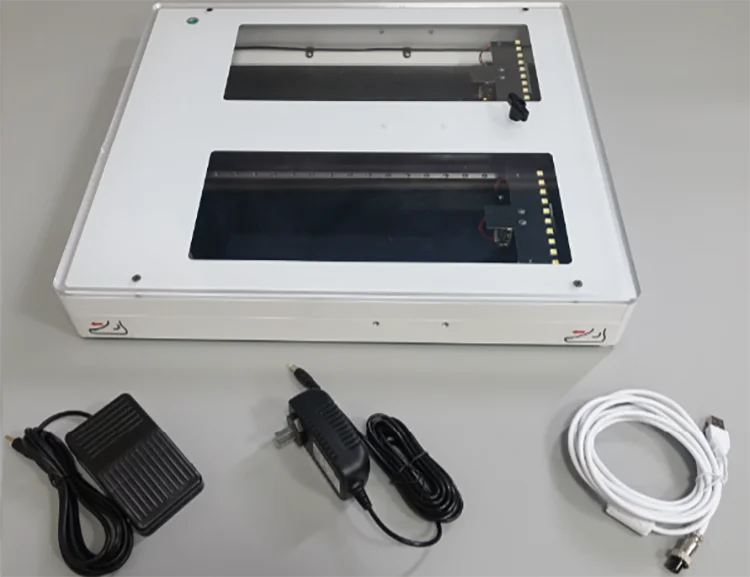 An infrared light pattern is projected onto the person, which is detected by two stereo
An infrared light pattern is projected onto the person, which is detected by two stereo
cameras. While the sensor slides move up again, another camera captures the color information of
the person, so that a colored 3D model can be created. The total recording time, including data
processing with the Anthroscan software from Human Solutions, is about 60 seconds.
The Specifications of the Vitronic Vitus
The Vitronic Vitus body scanner weighs about 250 kg (551 lbs.) and is relatively mobile. According to
the manufacturer, the weight has been reduced since the previous model, making the device easier
to transport and set up. The 3D scanner can be taken along to trade fairs or events and can be by
two people in about four hours.
The total diameter of the 3D scanner is about 2.20 m (7’ 2”), and it’s about 2. 90 m (9’ 6”) tall.
90 m (9’ 6”) tall.
According to the manufacturer, however, a ceiling height of at least 3.10 m (10’ 2”) is required for
the assembly. The Vitronic Vitus also has its own lighting system in the scan cabin, which makes its
use independent of external lighting conditions. The list price of the Vitronic Vitus is currently
approx. 60,000 euros (70,860 USD).
Conclusion
The Vitronic Vitus is a structured-light scanner that has been optimized for body scans. It is cheaper
than a photogrammetry system with DSLR cameras. A big advantage of the Vitronic Vitus is that
directly after the 3D scan, a correctly scaled 3D model can be exported.
Do you need a person (figure) 3D scan with the Vitronic Vitus?
Holocreators offers professional 3D-scanning and reverse engineering services. We are happy to
offer you the 3D scan with the Vitronic Vitus or process your 3D scan data created with this device. Please call us at +49 40 481133 or send an email info@holocreators. com
com
- Author: Swann Rack
Swann has been enthusiastic about everything 3D for many years. His roots lie in analog holography, which brought him to digital 3D-modeling in 2011.
The rapid progress of various 3D-scanning techniques fascinated himso much thathe founded Holocreators together with his brother Miro Rack in 2015.
Ready to get started?
You may be interested
Estimated reading time: mins
How to 3D-scan people or animals?
With the help of specialized 3D scanners, you can 3D-scan people and animals. This allows you to create 3D models that can be 3D-printed or used for 3D animation. We'll show you three different devices that make such 3D scans possible.
Estimated reading time: mins
What is Kitbashing?
Kitbashing is associated with model making. It is composed of the words "Kit" and "Bashing".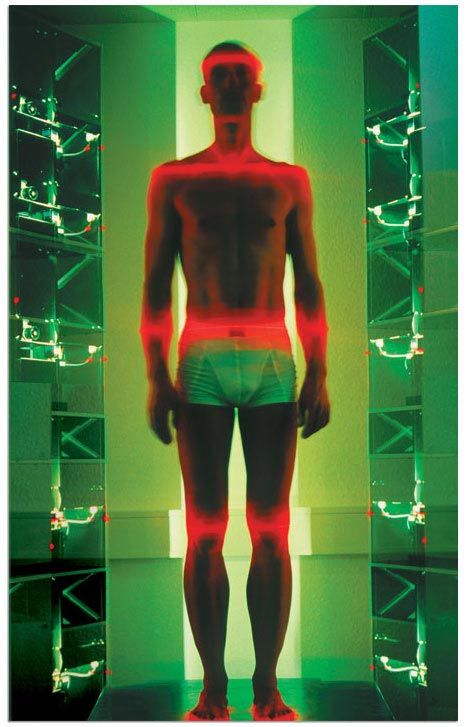 “Kit” refers to "model kit". So, when a model maker is "kitbashing", he blends parts from different model kits. Similar to a collage. The model maker combines several individual models into an entirely new model.
“Kit” refers to "model kit". So, when a model maker is "kitbashing", he blends parts from different model kits. Similar to a collage. The model maker combines several individual models into an entirely new model.
Estimated reading time: mins
What Types of 3D Model Databases Are Available?
We have compiled a selection of 3D model databases. You can download 3D models and then edit them in a 3D program or 3D print them. There are databases with free 3D models and those that sell them.
Estimated reading time: mins
What is Reverse Engineering? (Converting a 3D-Scan to CAD)
Reverse engineering is required whenever a 3D scan (STL format) needs to be converted into a CAD model (STEP format). We will give you a brief overview of three different reverse engineering techniques.
Estimated reading time: mins
What is the difference between NURBs model and a mesh?
A NURBS model consists of points connected by curves. A polygon mesh consists of thousands or millions of small triangles. CAD surface models are usually created using NURBS surfaces, while 3D scans are typically exported as a polygon mesh. The conversion from a polygon mesh to a NURBS model is called "reverse engineering".
A polygon mesh consists of thousands or millions of small triangles. CAD surface models are usually created using NURBS surfaces, while 3D scans are typically exported as a polygon mesh. The conversion from a polygon mesh to a NURBS model is called "reverse engineering".
Estimated reading time: mins
Reverse engineering and error propagation
Reverse engineering enables us to create a copy of an object. For this purpose, the part is 3Dscanned, then the 3D scan data is converted into a CAD format, and finally, the part is manufactured. All these steps result in noticeable deviations. If an error adds up over multiple steps, then we call this error propagation.
Schenkendorfstraße 28b, 22085 Hamburg, Germany
+ 49 40 481133
Mo - Fr: 9 am - 4 pm Holocreators GmbH hat 5,00 von 5 Sternen 93 Bewertungen auf ProvenExpert. com
com 3D-Scan Service, 3D-CT, Bauteilvermessung, STL zu STEP, Reverse Engineering Anonym
3D Scanning
Reverse Engineering
About Us
© Holocreators GmbH. 2021 All rights reserved.
VITUS 3D Body Scanner - PDF Free Download
Similar documents
3D Scanner using Line Laser. 1. Introduction. 2. Theory
. Introduction 3D Scanner using Line Laser Di Lu Electrical, Computer, and Systems Engineering Rensselaer Polytechnic Institute The goal of 3D reconstruction is to recover the 3D properties of a geometric
More information
A technical overview of the Fuel3D system.
A technical overview of the Fuel3D system. Contents Introduction 3 How does Fuel3D actually work? 4 Photometric imaging for high-resolution surface detail 4 Optical localization to track movement during
More information
ZEISS T-SCAN Automated / COMET Automated 3D Digitizing - Laserscanning / Fringe Projection Automated solutions for efficient 3D data capture
ZEISS T-SCAN Automated / COMET Automated 3D Digitizing - Laserscanning / Fringe Projection Automated solutions for efficient 3D data capture ZEISS 3D Digitizing Automated solutions for efficient 3D data
More information
Self-Calibrated Structured Light 3D Scanner Using Color Edge Pattern
Self-Calibrated Structured Light 3D Scanner Using Color Edge Pattern Samuel Kosolapov Department of Electrical Engineering Braude Academic College of Engineering Karmiel 21982, Israel e-mail: ksamuel@braude. ac.il
ac.il
More information
We measure beauty. FaceSCAN 3D & BodySCAN 3D
We measure beauty. FaceSCAN 3D & BodySCAN 3D PRIMOS International GFM products are available worldwide and used in 24 countries. For questions regarding the use of PRIMOS for future tasks in your company
More information
3D SCANNING: A NEW APPROACH TOWARDS MODEL DEVELOPMENT IN ADVANCED MANUFACTURING SYSTEM
3D SCANNING: A NEW APPROACH TOWARDS MODEL DEVELOPMENT IN ADVANCED MANUFACTURING SYSTEM Dr. Trikal Shivshankar 1, Patil Chinmay 2, Patokar Pradeep 3 Professor, Mechanical Engineering Department, SSGM Engineering
More information
VECTORAL IMAGING THE NEW DIRECTION IN AUTOMATED OPTICAL INSPECTION
VECTORAL IMAGING THE NEW DIRECTION IN AUTOMATED OPTICAL INSPECTION Mark J. Norris Vision Inspection Technology, LLC Haverhill, MA [email protected] ABSTRACT Traditional methods of identifying and
Norris Vision Inspection Technology, LLC Haverhill, MA [email protected] ABSTRACT Traditional methods of identifying and
More information
Laserlyte-Flex Alignment System
Laserlyte-Flex Alignment System LaserLyte-Flex The LaserLyte-Flex Alignment System is a unique, interchangeable, low cost plug and play laser system. Designed specifically for aligning and positioning
More information
STATE OF THE ART OF THE METHODS FOR STATIC 3D SCANNING OF PARTIAL OR FULL HUMAN BODY
STATE OF THE ART OF THE METHODS FOR STATIC 3D SCANNING OF PARTIAL OR FULL HUMAN BODY Dr. Nicola D Apuzzo N. D Apuzzo, 14.6.06 1 Contents of presentation Introduction on 3D human body digitization Measurement
More information
How To Use Bodescan For 3D Imaging Of The Human Body
«Bodescan» THE ULTIMATE 3D SCANNER FOR DATA ACQUISITION OF HUMAN BODY A COMPREHENSIVE SYSTEM INCLUDING HARDWARE AND SOFTWARE TOOLS Page 2 of 9 Bodescan HUMAN BODY3D SCANNING HARDWARE AND SOFTWARE INCLUDED
More information
Guideline Laser Series
Guideline Laser Series Highly visible alignment laser for visually demanding surfaces Red / Green long visible lines Equal brightness across length of the line Uniform Line (no fading at ends of the line)
More information
Direct and Reflected: Understanding the Truth with Y-S 3
Direct and Reflected: Understanding the Truth with Y-S 3 -Speaker System Design Guide- December 2008 2008 Yamaha Corporation 1 Introduction Y-S 3 is a speaker system design software application. It is
It is
More information
Thermal Imaging Test Target THERMAKIN Manufacture and Test Standard
Thermal Imaging Test Target THERMAKIN Manufacture and Test Standard June 2014 This document has been produced by CPNI as the standard for the physical design, manufacture and method of use of the Thermal
More information
PRODUCT SHEET. [email protected] [email protected] www.biopac.com
EYE TRACKING SYSTEMS BIOPAC offers an array of monocular and binocular eye tracking systems that are easily integrated with stimulus presentations, VR environments and other media. Systems Monocular Part
More information
L-LAS-TB-CL serie. laser light curtains for inline measuring tasks
L-LAS-TB-CL serie laser light curtains for inline measuring tasks Maximum distance 2.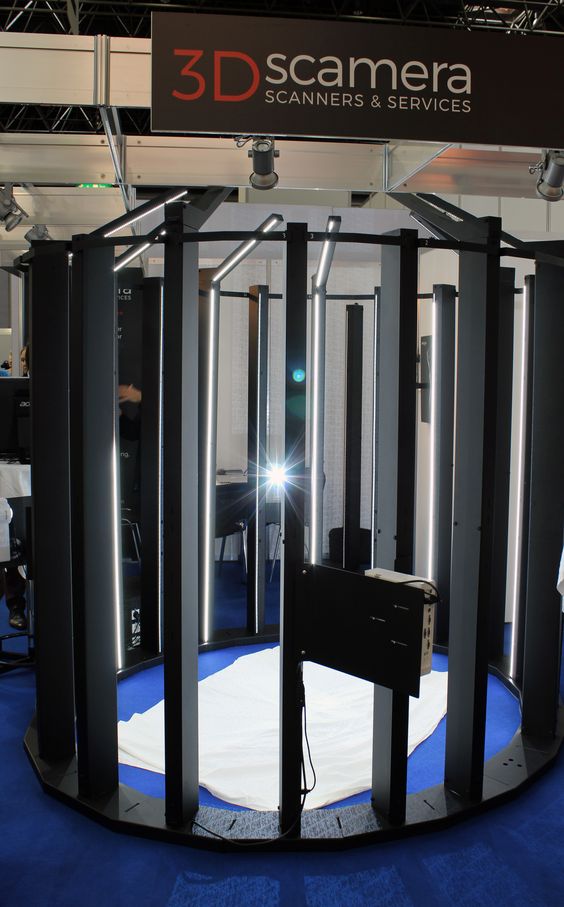 000 mm Measurement range 6 up to 98 mm Resolution up to 4 µm up to 1,5 khz scan rate 0-10 V or 4-20 ma analogue output
000 mm Measurement range 6 up to 98 mm Resolution up to 4 µm up to 1,5 khz scan rate 0-10 V or 4-20 ma analogue output
More information
MRC High Resolution. MR-compatible digital HD video camera. User manual
MRC High Resolution MR-compatible digital HD video camera User manual page 1 of 12 Contents 1. Intended use...2 2. System components...3 3. Video camera and lens...4 4. Interface...4 5. Installation...5
More information
Types of 3D Scanners and 3D Scanning Technologies.
Types of 3D Scanners and 3D Scanning Technologies. There are many types of 3D scanners and 3D scanning technologies. Some are ideal for short range scanning while others are better suited for mid or long
More information
RIEGL VZ-400 NEW. Laser Scanners.
 Latest News March 2009
Latest News March 2009 Latest News March 2009 NEW RIEGL VZ-400 Laser Scanners The following document details some of the excellent results acquired with the new RIEGL VZ-400 scanners, including: Time-optimised fine-scans The
More information
Application Example: Quality Control. Turbines: 3D Measurement of Water Turbines
Application Example: Quality Control Turbines: 3D Measurement of Water Turbines Measuring Systems: ATOS, TRITOP Keywords: Kaplan, Francis, Pelton, angles 3D scanning of turbines was performed successfully
More information
Application Note #503 Comparing 3D Optical Microscopy Techniques for Metrology Applications
Screw thread image generated by WLI Steep PSS angles WLI color imaging Application Note #503 Comparing 3D Optical Microscopy Techniques for Metrology Applications 3D optical microscopy is a mainstay metrology
More information
Making 3D Threads in Feature Based Solid Modelers
Making 3D Threads in Feature Based Solid Modelers THREAD BASICS Making true geometric threads in feature-based solid modelers is a fairly straightforward process and can be handled using several different
More information
INTRODUCTION TO RENDERING TECHNIQUES
INTRODUCTION TO RENDERING TECHNIQUES 22 Mar.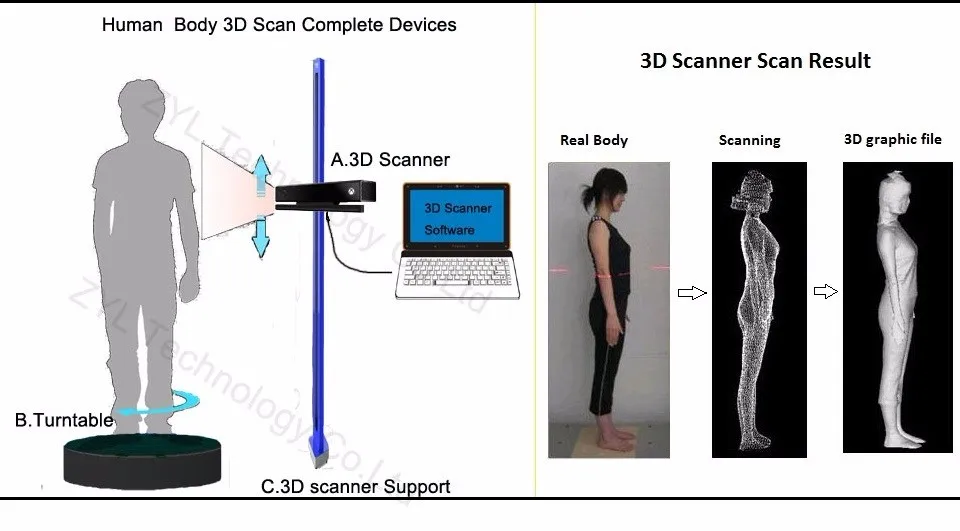 212 Yanir Kleiman What is 3D Graphics? Why 3D? Draw one frame at a time Model only once X 24 frames per second Color / texture only once 15, frames for a feature
212 Yanir Kleiman What is 3D Graphics? Why 3D? Draw one frame at a time Model only once X 24 frames per second Color / texture only once 15, frames for a feature
More information
ENGINEERING METROLOGY
ENGINEERING METROLOGY ACADEMIC YEAR 92-93, SEMESTER ONE COORDINATE MEASURING MACHINES OPTICAL MEASUREMENT SYSTEMS; DEPARTMENT OF MECHANICAL ENGINEERING ISFAHAN UNIVERSITY OF TECHNOLOGY Coordinate Measuring
More information
Laser diffuse reflection light scanner with background suppression. Dimensioned drawing
Specifications and description HRTL 3B Laser diffuse reflection light scanner with background suppression Dimensioned drawing We reserve the right to make changes DS_HRTL3B_en.fm en 01-2010/12 50114049
More information
LIST OF CONTENTS CHAPTER CONTENT PAGE DECLARATION DEDICATION ACKNOWLEDGEMENTS ABSTRACT ABSTRAK
vii LIST OF CONTENTS CHAPTER CONTENT PAGE DECLARATION DEDICATION ACKNOWLEDGEMENTS ABSTRACT ABSTRAK LIST OF CONTENTS LIST OF TABLES LIST OF FIGURES LIST OF NOTATIONS LIST OF ABBREVIATIONS LIST OF APPENDICES
More information
VERSATILE AND EASY-TO-USE 3D LASER SCANNERS > >
VERSATILE AND EASY-TO-USE 3D LASER SCANNERS > > A WORLD OF APPLICATIONS Z Corporation, producers of the industry s fastest, easiest-to-use and most versatile 3D scanners, makes 3D scanning ideal for a
More information
Shape Measurement of a Sewer Pipe.
 Using a Mobile Robot with Computer Vision
Using a Mobile Robot with Computer Vision International Journal of Advanced Robotic Systems ARTICLE Shape Measurement of a Sewer Pipe Using a Mobile Robot with Computer Vision Regular Paper Kikuhito Kawasue 1,* and Takayuki Komatsu 1 1 Department
More information
Making Better Medical Devices with Multisensor Metrology
Making Better Medical Devices with Multisensor Metrology by Nate J. Rose, Chief Applications Engineer, Optical Gaging Products (OGP) Multisensor metrology is becoming a preferred quality control technology
More information
Specifying Laser Scanning Services. A Quantapoint White Paper
A Quantapoint White Paper ABSTRACT Specifying Laser Scanning Services to Help Ensure Trusted and Accurate Results As-built documentation created using laser scanning is rapidly being adopted as the tool
More information
LASER-PROTECTION INFORMATION
LASER-PROTECTION INFORMATION µspeed-systems Version V2. 0 Creation date: 18.07.2012 page 1/8 LASER PROTECTION The µspeed sensor system is a laser-based measuring system. When using a µspeed, it is necessary
0 Creation date: 18.07.2012 page 1/8 LASER PROTECTION The µspeed sensor system is a laser-based measuring system. When using a µspeed, it is necessary
More information
GANTRY ROBOTIC CELL FOR AUTOMATIC STORAGE AND RETREIVAL SYSTEM
Advances in Production Engineering & Management 4 (2009) 4, 255-262 ISSN 1854-6250 Technical paper GANTRY ROBOTIC CELL FOR AUTOMATIC STORAGE AND RETREIVAL SYSTEM Ata, A., A.*; Elaryan, M.**; Gemaee, M.**;
More information
Scanners and How to Use Them
Written by Jonathan Sachs Copyright 1996-1999 Digital Light & Color Introduction A scanner is a device that converts images to a digital file you can use with your computer. There are many different types
More information
HIGH-PERFORMANCE INSPECTION VEHICLE FOR RAILWAYS AND TUNNEL LININGS.
 HIGH-PERFORMANCE INSPECTION VEHICLE FOR RAILWAY AND ROAD TUNNEL LININGS.
HIGH-PERFORMANCE INSPECTION VEHICLE FOR RAILWAY AND ROAD TUNNEL LININGS. HIGH-PERFORMANCE INSPECTION VEHICLE FOR RAILWAYS AND TUNNEL LININGS. HIGH-PERFORMANCE INSPECTION VEHICLE FOR RAILWAY AND ROAD TUNNEL LININGS. The vehicle developed by Euroconsult and Pavemetrics and described
More information
CAD / CAM Dr. P. V. Madhusuthan Rao Department of Mechanical Engineering Indian Institute of Technology, Delhi Lecture No. # 12 Reverse Engineering
CAD / CAM Dr. P. V. Madhusuthan Rao Department of Mechanical Engineering Indian Institute of Technology, Delhi Lecture No. # 12 Reverse Engineering So what we will do in today s lecture is basically take
More information
Data Sheet FUJITSU PRIMECENTER M2 19-inch Racks
Data Sheet FUJITSU PRIMECENTER M2 19-inch Racks Data Sheet FUJITSU PRIMECENTER M2 19-inch Racks 19-inch Industry Standard Rack Systems The trend to consolidation as a result of virtualization and optimization
More information
A Simple Guide To Understanding 3D Scanning Technologies
A Simple Guide To Understanding 3D Scanning Technologies First Edition www.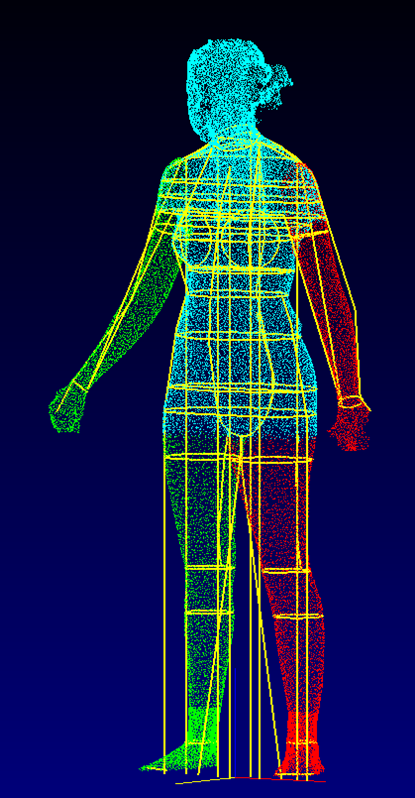 lmi3d.com Table of Contents Introduction At LMI Technologies, solving complex problems in a simple way is the philosophy that
lmi3d.com Table of Contents Introduction At LMI Technologies, solving complex problems in a simple way is the philosophy that
More information
VERSATILE AND EASY-TO-USE 3D LASER SCANNERS > >
VERSATILE AND EASY-TO-USE 3D LASER SCANNERS > > A WORLD OF APPLICATIONS 3D Systems, producers of the industry s fastest, easiest-to-use and most versatile 3D scanners, makes 3D scanning ideal for a wide
More information
Virtual Fitting by Single-shot Body Shape Estimation
Virtual Fitting by Single-shot Body Shape Estimation Masahiro Sekine* 1 Kaoru Sugita 1 Frank Perbet 2 Björn Stenger 2 Masashi Nishiyama 1 1 Corporate Research & Development Center, Toshiba Corporation,
More information
Tizian TM Creativ RT. Abutment Designer.
 for the CAD-software version 3.932. Instruction Manual
for the CAD-software version 3.932. Instruction Manual Tizian TM Creativ RT Abutment Designer for the CAD-software version 3.932 Instruction Manual Schütz Dental GmbH 61191 Rosbach, Germany Tel.: +49 6003 / 814-0 Fax: +49 6003 / 814-906 Version: 12/2010 Contents
More information
An Experimental Study on Pixy CMUcam5 Vision Sensor
LTU-ARISE-2015-01 1 Lawrence Technological University / Autonomous Robotics Institute for Supporting Education - Technical Memo ARISE-2015-01 An Experimental Study on Pixy CMUcam5 Vision Sensor Charles
More information
FREQUENTLY ASKED QUESTIONS
C FREQUENTLY ASKED QUESTIONS 1 [Q] What is the MakerBot Digitizer [A] The MakerBot Digitizer Desktop 3D Scanner quickly turns the things in your world into 3D models that you can modify, improve, share,
More information
Manual for simulation of EB processing.
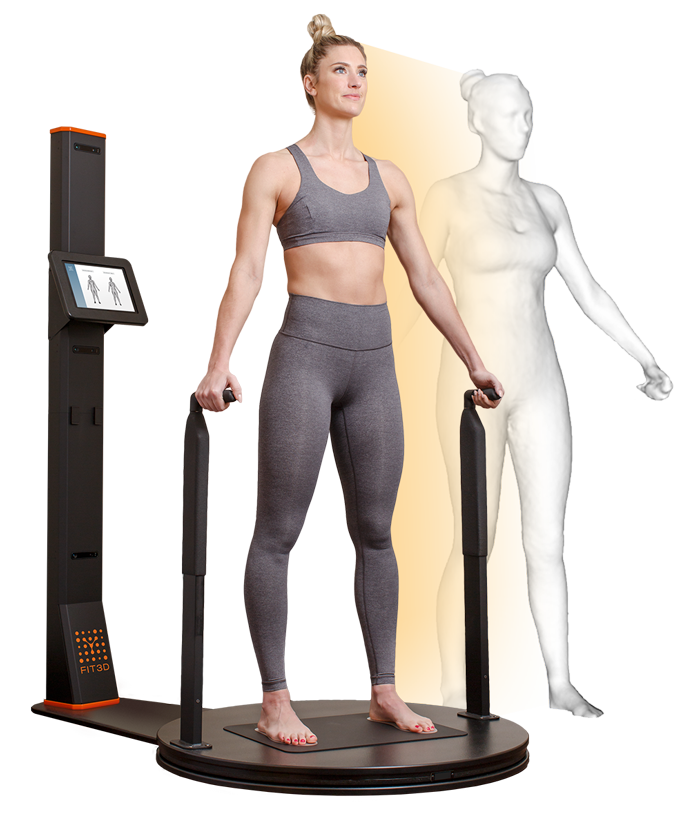 Software ModeRTL
Software ModeRTL 1 Manual for simulation of EB processing Software ModeRTL How to get results. Software ModeRTL. Software ModeRTL consists of five thematic modules and service blocks. (See Fig.1). Analytic module is intended
More information
Diffraction of a Circular Aperture
Diffraction of a Circular Aperture Diffraction can be understood by considering the wave nature of light. Huygen's principle, illustrated in the image below, states that each point on a propagating wavefront
More information
HS-Steel-Classic. Curing chambers for the concrete block industry in a proven steel version
ANLAGENTECHNIK HS-Steel-Classic Curing chambers for the concrete block industry in a proven steel version + special galvanising + simple assembly due to snap-in connections and building kit system We build
More information
Power Supply and Indicator Unit Type 5024-1.
 Fig. 1 Type 5024-1. Mounting and Operating Instructions EB 9539 EN
Fig. 1 Type 5024-1. Mounting and Operating Instructions EB 9539 EN Power Supply and Indicator Unit Type 5024-1 Fig. 1 Type 5024-1 Mounting and Operating Instructions EB 9539 EN Edition October 2003 Application 1 Application The Type 5024-1 Power Supply and Indicator Unit
More information
Bar Code Reader Series BCL 20 A flexible reader for a variety of applications
Bar Code Reader Series BCL 20 A flexible reader for a variety of applications PRODUCT INFORMATION The benchmark for flexibility. Laser scanners of the BCL 20 series as variable as your requirements demand.
More information
MT90 Series MicroHardness Traverse Testing System
MT90 Series MicroHardness Traverse Testing System A Unique System with Unrivaled Speed And Accuracy in Case Depth Measurement. MT90 Microhardness Traverse Testing System Unrivaled Speed And Accuracy in
MT90 Microhardness Traverse Testing System Unrivaled Speed And Accuracy in
More information
National Performance Evaluation Facility for LADARs
National Performance Evaluation Facility for LADARs Kamel S. Saidi (presenter) Geraldine S. Cheok William C. Stone The National Institute of Standards and Technology Construction Metrology and Automation
More information
DIALux. evo 1. User Manual. The Software Standard for Calculating Lighting Layouts
DIALux evo 1 The Software Standard for Calculating Lighting Layouts User Manual 2012 DIAL GmbH Gustav-Adolf-Straße 4 58507 Lüdenscheid [email protected] www.dial.de First Edition 2012 The text and images
More information
Research-Grade Research-Grade. Capture
Research-Grade Research-Grade Motion Motion Capture Capture The System of Choice For Resear systems have earned the reputation as the gold standard for motion capture among research scientists. With unparalleled
With unparalleled
More information
Hygro-Thermometer + InfraRed Thermometer Model Rh201
User's Guide Hygro-Thermometer + InfraRed Thermometer Model Rh201 Introduction Congratulations on your purchase of the Extech Hygro-Thermometer plus InfraRed Thermometer. This device measures relative
More information
Digitization of Old Maps Using Deskan Express 5.0
Dražen Tutić *, Miljenko Lapaine ** Digitization of Old Maps Using Deskan Express 5.0 Keywords: digitization; scanner; scanning; old maps; Deskan Express 5.0. Summary The Faculty of Geodesy, University
More information
I-SiTE - Laser Scanning Revolutionises Site Survey
I-SiTE - Laser Scanning Revolutionises Site Survey I.K. Kapageridis Maptek/KRJA Systems Ltd, United Kingdom ABSTRACT: MAPTEK's revolutionary I-SiTE 3D Laser Imaging System, presented in this paper, is
More information
Product Information.
 QUADRA-CHEK 3000 Evaluation Electronics For Metrological Applications
QUADRA-CHEK 3000 Evaluation Electronics For Metrological Applications Product Information QUADRA-CHEK 3000 Evaluation Electronics For Metrological Applications April 2016 QUADRA-CHEK 3000 The evaluation electronics for intuitive 2-D measurement The QUADRA-CHEK 3000 evaluation
More information
Tube Control Measurement, Sorting Modular System for Glass Tube
Tube Control Measurement, Sorting Modular System for Glass Tube Tube Control is a modular designed system of settled instruments and modules. It comprises measuring instruments for the tube dimensions,
More information
MAVO-MONITOR / MAVO-SPOT Instrument Set for Contact or Distant Measurements of Luminances
Operating Instructions MAVO-MONITOR / MAVO-SPOT Instrument Set for Contact or Distant Measurements of Luminances 15043 1/1. 00 10 9 8 1 7 6 1 Display 2 Slider switch cd/m² segment test 3 ON/OFF switch 4
00 10 9 8 1 7 6 1 Display 2 Slider switch cd/m² segment test 3 ON/OFF switch 4
More information
3D Laser Scanning 1 WHAT IS 3D LASER SCANNING?
3D Laser Scanning 1 WHAT IS 3D LASER SCANNING? In essence, laser scanning is to 3D objects what photocopying is to 2D objects. Laser Design's Surveyor family of 3D Laser Scanning Systems makes use of a
More information
Differentiation of 3D scanners and their positioning method when applied to pipeline integrity
11th European Conference on Non-Destructive Testing (ECNDT 2014), October 6-10, 2014, Prague, Czech Republic More Info at Open Access Database www.ndt.net/?id=16317 Differentiation of 3D scanners and their
More information
Understanding Line Scan Camera Applications
Understanding Line Scan Camera Applications Discover the benefits of line scan cameras, including perfect, high resolution images, and the ability to image large objects. A line scan camera has a single
A line scan camera has a single
More information
How To Fuse A Point Cloud With A Laser And Image Data From A Pointcloud
REAL TIME 3D FUSION OF IMAGERY AND MOBILE LIDAR Paul Mrstik, Vice President Technology Kresimir Kusevic, R&D Engineer Terrapoint Inc. 140-1 Antares Dr. Ottawa, Ontario K2E 8C4 Canada [email protected]
More information
EPSON SCANNING TIPS AND TROUBLESHOOTING GUIDE Epson Perfection 3170 Scanner
EPSON SCANNING TIPS AND TROUBLESHOOTING GUIDE Epson Perfection 3170 Scanner SELECT A SUITABLE RESOLUTION The best scanning resolution depends on the purpose of the scan. When you specify a high resolution,
More information
CNC-STEP. "LaserProbe4500" 3D laser scanning system Instruction manual
LaserProbe4500 CNC-STEP "LaserProbe4500" 3D laser scanning system Instruction manual 2 Hylewicz CNC-Technik Siemensstrasse 13-15 D-47608 Geldern Fon. : +49 (0) 2831 133236 E-Mail: [email protected] Website:
: +49 (0) 2831 133236 E-Mail: [email protected] Website:
More information
Barcode positioning systems BPS 8, BPS 34/37 Innovations that truly move you forwards.
Barcode positioning systems BPS 8, BPS 34/37 Innovations that truly move you forwards. PRODUCT INFORMATION Flexible, tolerant and millimetre precision. The Leuze electronic barcode positioning system.
More information
Integrated sensors for robotic laser welding
Proceedings of the Third International WLT-Conference on Lasers in Manufacturing 2005,Munich, June 2005 Integrated sensors for robotic laser welding D. Iakovou *, R.G.K.M Aarts, J. Meijer University of
More information
A Short Introduction to Computer Graphics
A Short Introduction to Computer Graphics Frédo Durand MIT Laboratory for Computer Science 1 Introduction Chapter I: Basics Although computer graphics is a vast field that encompasses almost any graphical
More information
TRIMBLE TX5 3D LASER SCANNER QUICK START GUIDE
TRIMBLE TX5 3D LASER SCANNER QUICK START GUIDE Equipment 1 8 9 5 6 7 4 3 2 The TX5 laser scanner ships with the following equipment: 1 Scanner transport and carry case 6 USB memory card reader 2 AC power
More information
Chapter 1 Parts C.
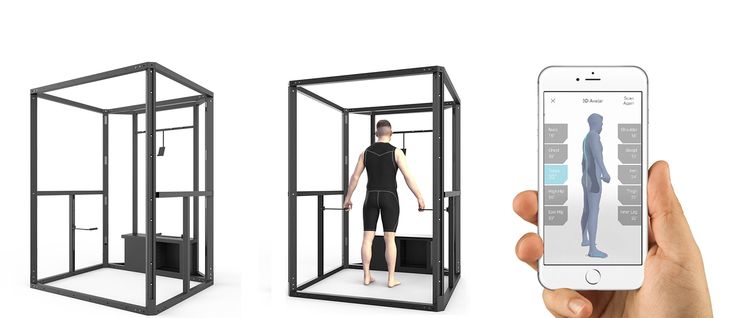 Robert Bagnell, Jr., Ph.D., 2012
Robert Bagnell, Jr., Ph.D., 2012 Chapter 1 Parts C. Robert Bagnell, Jr., Ph.D., 2012 Figure 1.1 illustrates the parts of an upright compound microscope and indicates the terminology that I use in these notes. Figure 1.1. Parts of a Compound
More information
CS635 Spring 2010. Department of Computer Science Purdue University
Structured Light Based Acquisition (Part 1) CS635 Spring 2010 Daniel G Aliaga Daniel G. Aliaga Department of Computer Science Purdue University Passive vs. Active Acquisition Passive + Just take pictures
More information
Application of Data Matrix Verification Standards
Data Matrix symbol verification at its most basic level eliminates the subjective quality determination that causes discord between marking and reading suppliers, and replaces those subjective opinions
More information
Template-based Eye and Mouth Detection for 3D Video Conferencing
Template-based Eye and Mouth Detection for 3D Video Conferencing Jürgen Rurainsky and Peter Eisert Fraunhofer Institute for Telecommunications - Heinrich-Hertz-Institute, Image Processing Department, Einsteinufer
More information
2003-2012 MVTec Software GmbH.
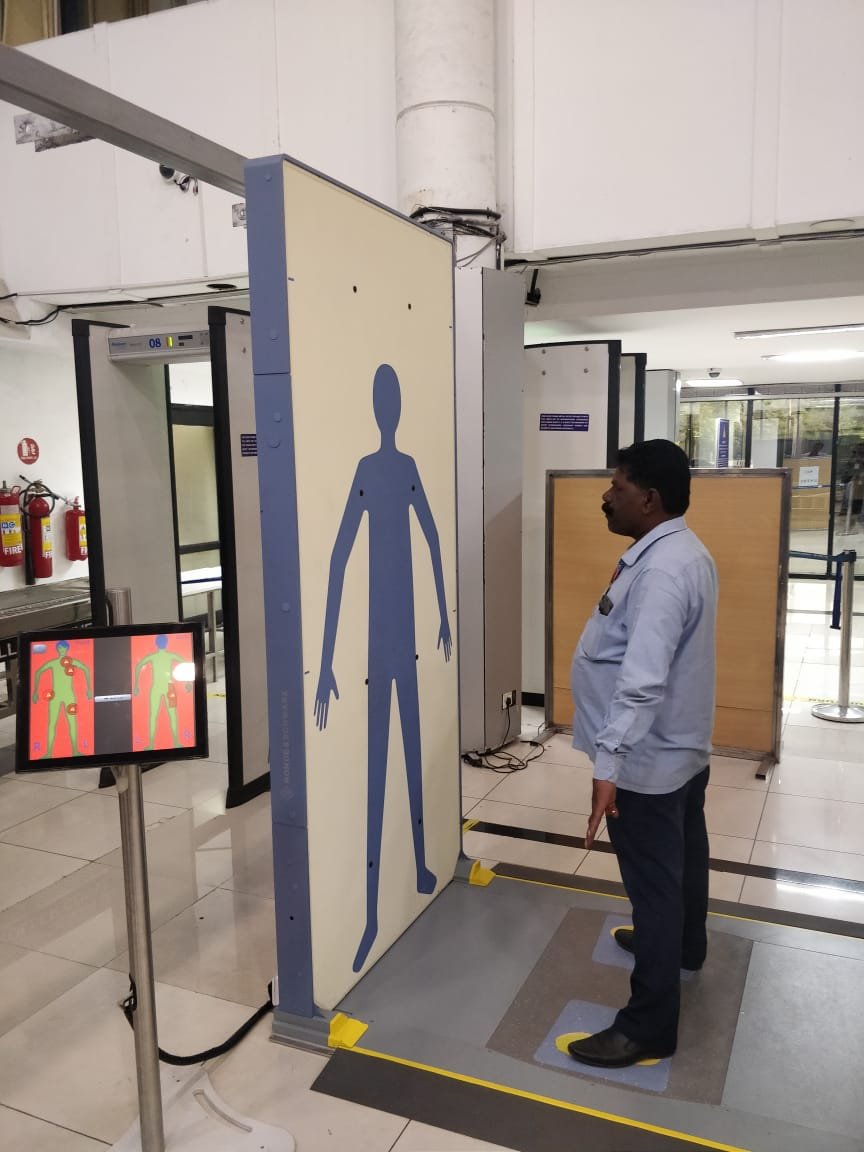
1 MVTec Software GmbH is a leading international manufacturer of software for machine vision used in all demanding areas of imaging: semi-conductor industry, web inspection, quality control and inspection
More information
Hello and Welcome to this presentation on LED Basics. In this presentation we will look at a few topics in semiconductor lighting such as light
Hello and Welcome to this presentation on LED Basics. In this presentation we will look at a few topics in semiconductor lighting such as light generation from a semiconductor material, LED chip technology,
More information
Automatic Labeling of Lane Markings for Autonomous Vehicles
Automatic Labeling of Lane Markings for Autonomous Vehicles Jeffrey Kiske Stanford University 450 Serra Mall, Stanford, CA 94305 jkiske@stanford.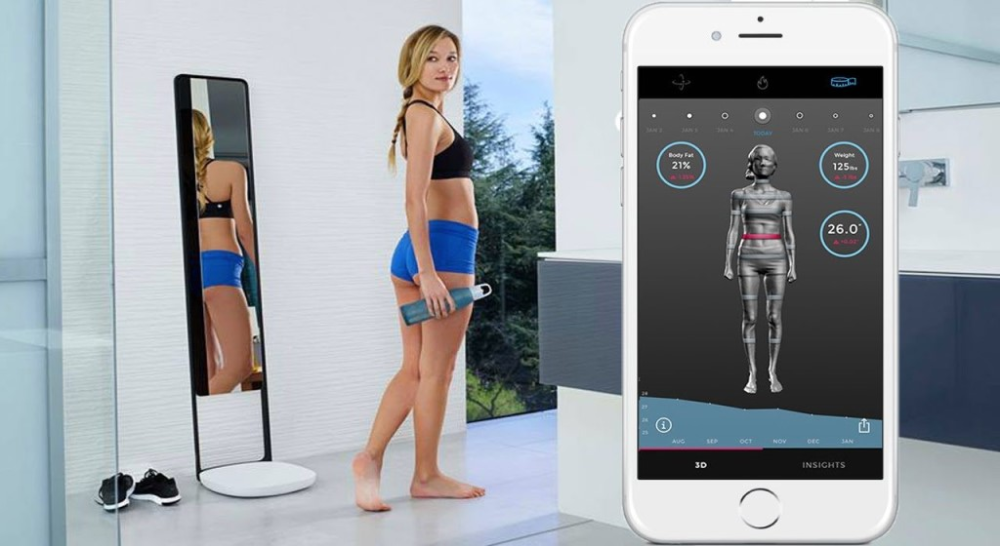 edu 1. Introduction As autonomous vehicles become more popular,
edu 1. Introduction As autonomous vehicles become more popular,
More information
GK Packing System Welding Instructions
GK Packing System Welding Instructions Roxtec GmbH Neuer Höltigbaum 1-3, 22143 Hamburg GERMANY Tel +49 (040) 657398-0, Fax +49 (040) 657398-50 EMAIL [email protected], www.roxtec.de Welding instructions
More information
K17.12 Door closers K17. Doors 01.09.2013
K17 Doors K17.12 01.09.2013 Waregemstraat 5-9870 Zulte - Belgium - T. +32 9 388 88 81 - F. +32 9 388 88 21 - [email protected] - www.sobinco.com Contents 1. OPTIC door closer TS40(V) with scissor
More information
PHOTOGRAMMETRIC TECHNIQUES FOR MEASUREMENTS IN WOODWORKING INDUSTRY
PHOTOGRAMMETRIC TECHNIQUES FOR MEASUREMENTS IN WOODWORKING INDUSTRY V. Knyaz a, *, Yu. Visilter, S. Zheltov a State Research Institute for Aviation System (GosNIIAS), 7, Victorenko str., Moscow, Russia
Knyaz a, *, Yu. Visilter, S. Zheltov a State Research Institute for Aviation System (GosNIIAS), 7, Victorenko str., Moscow, Russia
More information
FSI Machine Vision Training Programs
FSI Machine Vision Training Programs Table of Contents Introduction to Machine Vision (Course # MVC-101) Machine Vision and NeuroCheck overview (Seminar # MVC-102) Machine Vision, EyeVision and EyeSpector
More information
Interference. Physics 102 Workshop #3. General Instructions
Interference Physics 102 Workshop #3 Name: Lab Partner(s): Instructor: Time of Workshop: General Instructions Workshop exercises are to be carried out in groups of three. One report per group is due by
More information
Collision Prevention and Area Monitoring with the LMS Laser Measurement System
Collision Prevention and Area Monitoring with the LMS Laser Measurement System PDF processed with CutePDF evaluation edition www.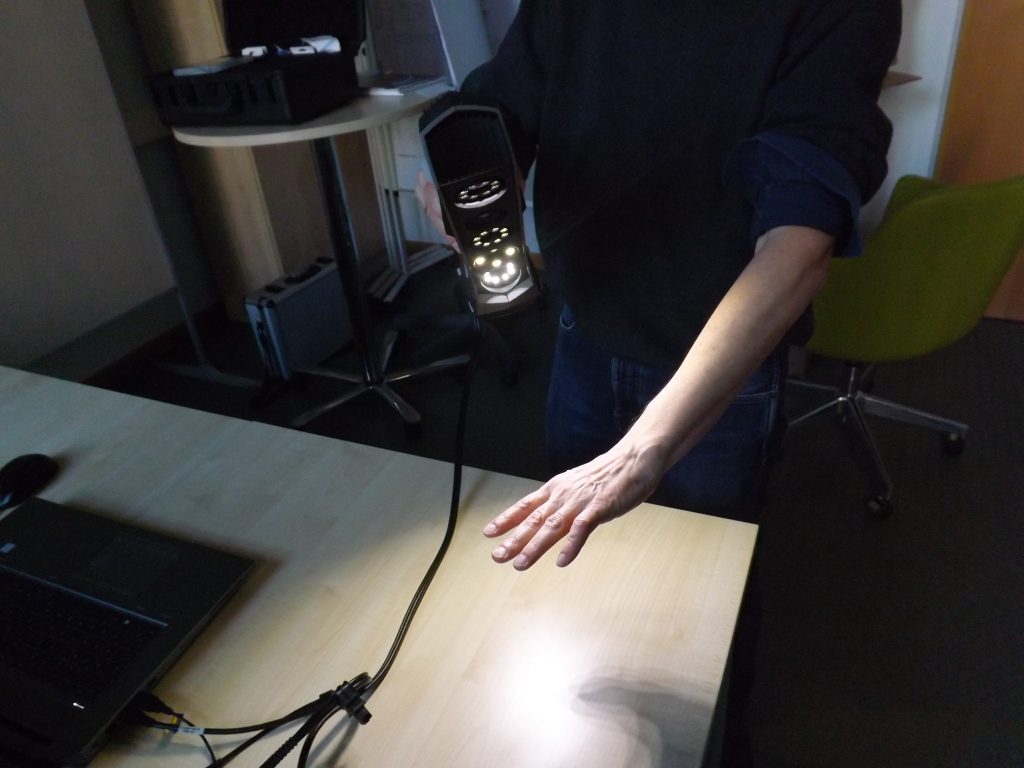 cutepdf.com A v o i d...... collisions SICK Laser Measurement Systems are
cutepdf.com A v o i d...... collisions SICK Laser Measurement Systems are
More information
Application Example: Quality Control of Injection-Molded Parts
Application Example: Quality Control of Injection-Molded Parts Measuring Systems: ATOS Keywords: Optical 3D measuring technology, mold try-out, first article inspection, form and dimension inspection of
More information
PCB Component Placement Inspection
Executive Summary PCB Component Placement Inspection Optimet s ConoProbe Mark10 HD with a 50 mm focal length lens was used to inspect PCB component placement. The PCB board inspected contained both individual
More information
8 by 8 dot matrix LED displays with Cascadable Serial driver B32CDM8 B48CDM8 B64CDM8 General Description
8 by 8 dot matrix LED displays with Cascadable Serial driver B32CDM8 B48CDM8 B64CDM8 General Description The B32CDM8, B48CDM8 and the B64CDM8 are 8 by 8 (row by column) dot matrix LED displays combined
More information
A Measurement of 3-D Water Velocity Components During ROV Tether Simulations in a Test Tank Using Hydroacoustic Doppler Velocimeter
A Measurement of 3-D Water Velocity Components During ROV Tether Simulations in a Test Tank Using Hydroacoustic Doppler Velocimeter Leszek Kwapisz (*) Marek Narewski Lech A. Rowinski Cezary Zrodowski Faculty
Rowinski Cezary Zrodowski Faculty
More information
LED Anti-Collision Lighting System for Airbus A320 Family
LED Anti-Collision Lighting System for Airbus A320 Family LEDs established in anti-collision lighting For the first time, UTC Aerospace Systems has implemented state-ofthe-art LED technology into an anti-collision
More information
High speed infrared camera for contactless temperature measurement on rotating tires
DIAS Infrared GmbH Publications No. 9 1 High speed infrared camera for contactless temperature measurement on rotating tires Helmut Budzier, Dresden University of Technology, Institute for Solid-State
More information
Nederland België / Belgique
Cronus Brochure 2 Introduction Cronus: The first spectrometer and colorimeter in one The Cronus is world s first spectrocolorimeter combining a high en VIS spectrometer with a high speed XYZ colorimeter.
More information
The process components and related data characteristics addressed in this document are:
TM Tech Notes Certainty 3D November 1, 2012 To: General Release From: Ted Knaak Certainty 3D, LLC Re: Structural Wall Monitoring (#1017) rev: A Introduction TopoDOT offers several tools designed specifically
More information
White paper. CCD and CMOS sensor technology Technical white paper
White paper CCD and CMOS sensor technology Technical white paper Table of contents 1. Introduction to image sensors 3 2. CCD technology 4 3. CMOS technology 5 4. HDTV and megapixel sensors 6 5. Main differences
More information
THE IMPOSSIBLE DOSE HOW CAN SOMETHING SIMPLE BE SO COMPLEX? Lars Hode
THE IMPOSSIBLE DOSE HOW CAN SOMETHING SIMPLE BE SO COMPLEX? Lars Hode Swedish Laser-Medical Society The dose is the most important parameter in laser phototherapy. At a first glance, the dose seem very
At a first glance, the dose seem very
More information
Adjustment functions for both span and shift have been incorporated
SENSORS FOR SERIES LED Type Wafer Alignment Sensor FX-0-F FT-F9 FD-F7 EX-F70/F60 M SH-7 FD-L4 M-DW The use of a safe LED light beam now allows for high precision detection with a resolution of 0!m (.8
More information
How To Use Trackeye
Product information Image Systems AB Main office: Ågatan 40, SE-582 22 Linköping Phone +46 13 200 100, fax +46 13 200 150 [email protected], Introduction TrackEye is the world leading system for motion
More information
Barcode Reader Series BCL 31, BCL 32, BCL 34
P R O D U C T I N F O R M A T I O N Barcode Reader Series BCL 31, BCL 32, BCL 34 BCL 31, BCL 32 and BCL 34: Barcode readers for universal use in conveyor and storage technology. 3 models: numerous advantages.
3 models: numerous advantages.
More information
A PHOTOGRAMMETRIC APPRAOCH FOR AUTOMATIC TRAFFIC ASSESSMENT USING CONVENTIONAL CCTV CAMERA
A PHOTOGRAMMETRIC APPRAOCH FOR AUTOMATIC TRAFFIC ASSESSMENT USING CONVENTIONAL CCTV CAMERA N. Zarrinpanjeh a, F. Dadrassjavan b, H. Fattahi c * a Islamic Azad University of Qazvin - [email protected]
More information
Features: Mounting the Optic
MICRO GREEN DOT with INTEGRATED RED LASER The Patented Micro Green Dot with Integrated Red Laser is a compact optical system packed with many features. The Green Dot is designed as the primary targeting
More information
3D SCANNERTM. 3D Scanning Comes Full Circle. s u n. Your Most Valuable QA and Dosimetry Tools A / B / C. The 3D SCANNER Advantage
3D SCANNERTM 3D Scanning Comes Full Circle Relative 3D Dosimetry offering the easiest setup, most objectivity, and best consistency available The 3D SCANNER Advantage Advanced Design Ring and diameter
More information
Clear Glass Sensor.
 Ordering Information E3S-CR67/62. Optimum Sensor for Detecting Transparent Glass and Plastic Bottles
Ordering Information E3S-CR67/62. Optimum Sensor for Detecting Transparent Glass and Plastic Bottles Clear Glass Sensor Optimum Sensor for Detecting Transparent Glass and Plastic Bottles E3S-CR67/62 Retroreflective Sensor smoothly detects 5-mm gaps. Detects transparent bottles that have a lens effect.
More information
We bring quality to light. MAS 40 Mini-Array Spectrometer. light measurement
MAS 40 Mini-Array Spectrometer light measurement Features at a glance Cost-effective and robust CCD spectrometer technology Standard USB interface Compatible with all Instrument Systems measuring adapters
More information
TS-E24mm f/3.5l TS-E45mm f/2.8 TS-E90mm f/2.8 Instructions
TS-E24mm f/3.5l TS-E45mm f/2.8 TS-E90mm f/2.8 ENG Instructions Thank you for purchasing a Canon product. Canon s TS-E lenses are tilt-shift lenses designed for EOS cameras. The tilt-shift mechanism enables
Canon s TS-E lenses are tilt-shift lenses designed for EOS cameras. The tilt-shift mechanism enables
More information
AutoLink Three-Phase Sectionalizer Specifications. Scope. General. Applicable Standards. Operating principle
Scope This specification stipulates the minimum requirements for mechanically linked three-phase electronic sectionalizers, for use on outdoor medium voltage overhead lines of 15, 27, and 38 kv. Electronic
More information
Real-time 3D Scanning System for Pavement Distortion Inspection
Real-time 3D Scanning System for Pavement Distortion Inspection Bugao Xu, Ph.D. & Professor University of Texas at Austin Center for Transportation Research Austin, Texas 78712 Pavement distress categories
More information
Entertainment 3D Scanners
Focus: Entertainment 3D Scanners
| "Spider-Man 2". |
The production stage for the creation of computer graphics includes three main stages: modeling, animation and rendering. In this article, we will consider the technology of scanning an object using a 3D scanner, as one of the most developing, promising and frequently used in creating a computer model of an object. Let's analyze the strengths and weaknesses of such a popular technology in work. We will consider 3D scanners in the context of the entertainment industry, namely game development and the film industry. Why the entertainment industry? But because this segment of the market is one of the most promising, developing and, no doubt, the most interesting for most of us.
Historical note
It is known that the first customers of 3D scanners were not Hollywood studios, but various design bureaus working in the automotive and aircraft industries.
It is known that for automobiles and aircraft, the aerodynamic drag coefficient is important, which is largely determined by the streamlining of forms. Car and aircraft bodies are blown in hydrodynamic tubes, where the level of streamlining of forms is determined by the injection effect of the air flow*.
"What does the 3d scanner have to do with it?" - you ask. Let's explain. The work on creating a model of a car, an aircraft is divided into several stages. At the first stage, a drawing of the future model is made, then a copy is made, usually from a plastic material. Further, the form is blown in a hydrodynamic tube and only then, with the help of scanning devices, information about it is transferred to a computer and processed in order to make more accurate drawings of a future car, aircraft, etc. on the basis of virtual models. It would be possible to model manually using special programs, such as Maya, but, firstly, it takes longer, and secondly, the model will be inaccurate, and engineers will be dissatisfied with such work.
Scanning technology was later adopted by the film industry. This significant event took place in the first half of 90-s is now the last century.
The first 3D scanners using laser technology were first released by Cyberware in 1991. Later, in 1992, the Cyberscan company was opened, whose specialists combined a 3D scanner, a 3D printer and an NCC (numerically controlled computer). In addition, a machine was invented in the bowels of the studio to reproduce copies of human bodies using 3D printers, based on the data obtained during scanning. The innovation turned out to be incredibly popular and in demand, orders poured in from Hollywood majors - large studios.
Oliver Reed in Gladiator It should be immediately noted that modeling methods vary depending on the project. Much depends on the goals pursued by the studio or a single developer.
There is a huge difference between scanning a jug for an online store and a human body model for a big-budget film production. The use of the definition "big budget" is not accidental, because the use of full body scanner technology significantly increases the costs of the film studio. Hollywood, as you know, is not scary with a price list, so no modern blockbuster is complete without scanning props and, most importantly, leading actors. For example, during the filming of the notorious film "Gladiator", the wonderful English actor Oliver Reed died, but the shooting was not even suspended, because all the leading actors were scanned in advance, and the deceased actor was replaced by an understudy in the general shots and the same understudy, but with digitized face of Oliver Reed - on large.
Contact scanners
| Immersion | Contact Scanner
Experts identify several 3D scanning technologies, none of which are industry standard.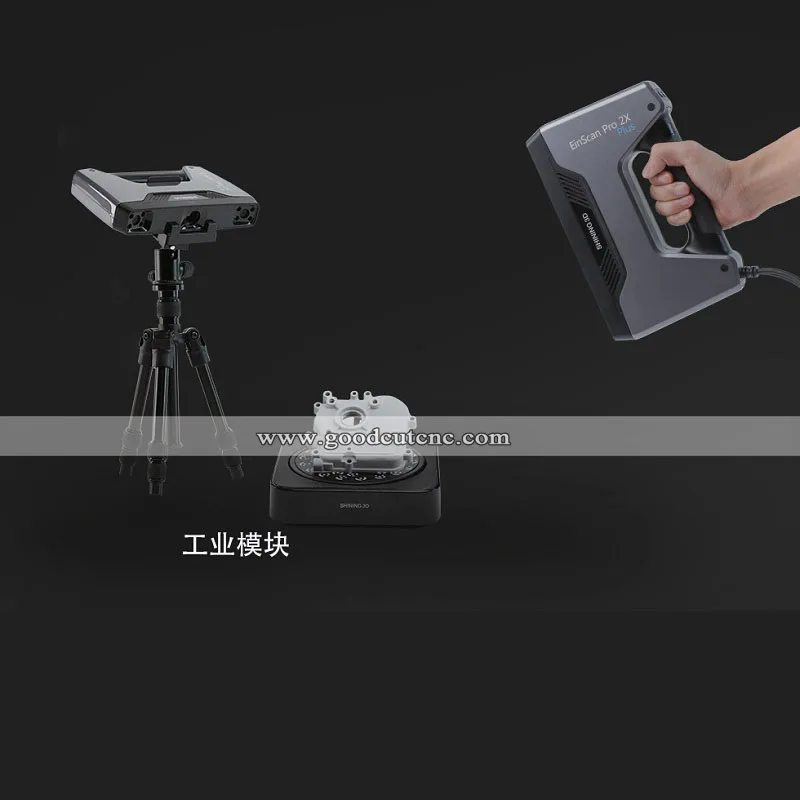 This happens largely because there is no technology without flaws. Each of the technologies used has its pros and cons. All existing 3D scanning technologies can be divided into two types: contact and non-contact/remote. A contact scanner is a type of scanner that uses in its work the principle of manually tracing the contour of an object by the operator himself. In other words, scanners that work with this technology have a special mechanical device - a sensor that resembles a "probe". Using this device, the points of the scanned object selected by the operator are transmitted to the computer.
This happens largely because there is no technology without flaws. Each of the technologies used has its pros and cons. All existing 3D scanning technologies can be divided into two types: contact and non-contact/remote. A contact scanner is a type of scanner that uses in its work the principle of manually tracing the contour of an object by the operator himself. In other words, scanners that work with this technology have a special mechanical device - a sensor that resembles a "probe". Using this device, the points of the scanned object selected by the operator are transmitted to the computer.
The main advantage and disadvantage of this type of devices at the same time is their semi-automaticity: the model, in fact, is produced by the operator, and not the device itself, which is much slower than more expensive 3d scanners using laser technology. In addition, unlike laser, non-contact scanners, touch scanners do not read the texture, which, in principle, is the determining criterion when choosing a scanner for its use in the film industry.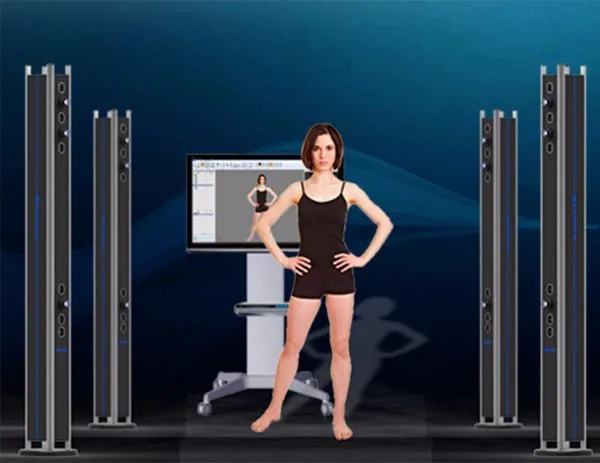
Not surprisingly, most experts have already written off such scanners, saying that their ceiling is the scanning of small objects. Nevertheless, the demand for these scanners is still quite high due to their low, even low cost. Not surprisingly, contact scanners have already been dubbed as poor man's scanners, which are intended for lazy modelers working in design studios. The use of contact scanners in the presence of non-contact scanners on the market is an inexpedient and inefficient enterprise when working on a film or a computer game.
Proximity scanners
| Cyberware Proximity Scanner |
Non-contact 3D scanners use more sophisticated and advanced laser technology. Most of this type of devices combine the following devices: laser sensors that replace the contact sensor, as well as digital photographic equipment, which is used for greater scanning accuracy and, most importantly, it allows you to get an object model with textures.
The disadvantage of this type of devices is their exorbitant cost (prices will be discussed later) and the inability to control the scanning process. After scanning the model with this type of scanner, the object has to be created almost anew, because the model turns out to be of little use for animation in most cases. The advantages include the ability to scan a three-dimensional texture, which requires minimal refinement. In this regard, non-contact laser scanners beat contact ones in all respects with their unwillingness to work with texture. In addition, laser scanners work with much larger objects than their mechanical counterparts.
Laser scanning technology continues to evolve in three main areas: zone, dot and stripe scanning. The best results are demonstrated by stripe scanning technology. A special grid\stripe is projected onto the object, and the contour of the scanned surface is determined by its distortions. In the film industry, the most used are, of course, non-contact 3D scanners using stripe scanning technology.
It is necessary to mention non-contact scanners, which are based on ultrasonic devices. In addition, at the moment, specialists are working on the creation of magnetic scanners that determine coordinates in space by changing the spatial magnetic field. The advantages of this type of scanners include the ability to scan bodies that are in a homogeneous environment or have an internal structure. The disadvantages include high cost and excessive sensitivity to environmental changes. In addition, ultrasonic and magnetic scanners have low accuracy - 1/16 and 1/32 inches, respectively. This type of scanner is mainly used in medicine.
Incidentally, there is a prejudice that laser scanners are dangerous to human eyes. In fact, this was the case before, and modern 3D scanners using laser technology are completely harmless to human eyes. At least that's what the manufacturer says. If he is cheating and you have suffered while working with the 3D scanner, then let us know and we will help you win the lawsuit. By the way, about manufacturers.
By the way, about manufacturers.
Manufacturer and prices
| Cyberware WBX 4 Scanner |
There are many companies on the market that manufacture 3D scanners. We will talk about the most famous companies that produce scanners that are used in the film and gaming industry. Prices for products, of course, vary and depend on the volume of services provided and the capabilities of the device. Below we will analyze the products of some of the leading companies that produce full body scanners that can be used in the production of computer games and films.
First of all, we should mention the American company Cyberware, which is rightfully considered one of the leaders in the production of 3D laser scanners. The company is engaged in the production of expensive equipment, the full set of which can be used to work on a film with a large number of complex effects.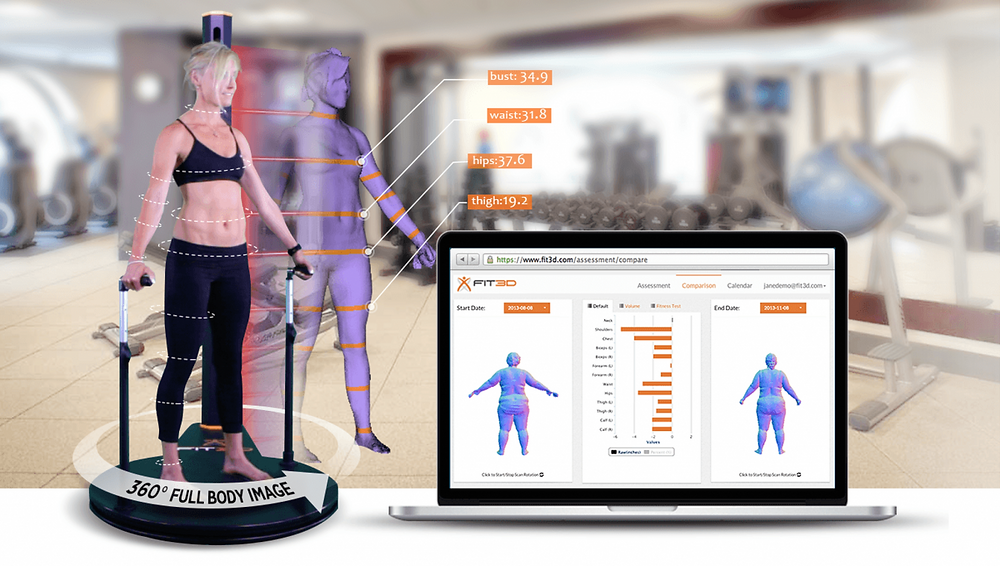
The latest version of The Whole Body X 3D Scanner (WBX) will cost the customer $240,000. The set of equipment comes with the DigiSize program, which measures, analyzes and stores data during scanning. But not everything is so simple, because the filmmaker will have to purchase the CySlice program created by the company, which is necessary for converting the resulting image to NURBS, QUADS, SUBD and for ordering polygons.
The editors of the Internet publication Render.ru contacted Sue Addelman, vice president of Cyberware, and she agreed to answer a few questions of interest to us.
A.Kh.: (Anna Kharkina) How long does it take for a scanner to complete a human body scan?
SA: (Sue Addelman) A complete cycle takes 17 seconds if we're talking about one pass. Generally WBX is used in the military to scan recruits. An acceptable result is achieved after 45 seconds.
A.H.: Can we import the received by the scanner
| CyClise Software for file conversion |
information in Maya, Max, etc.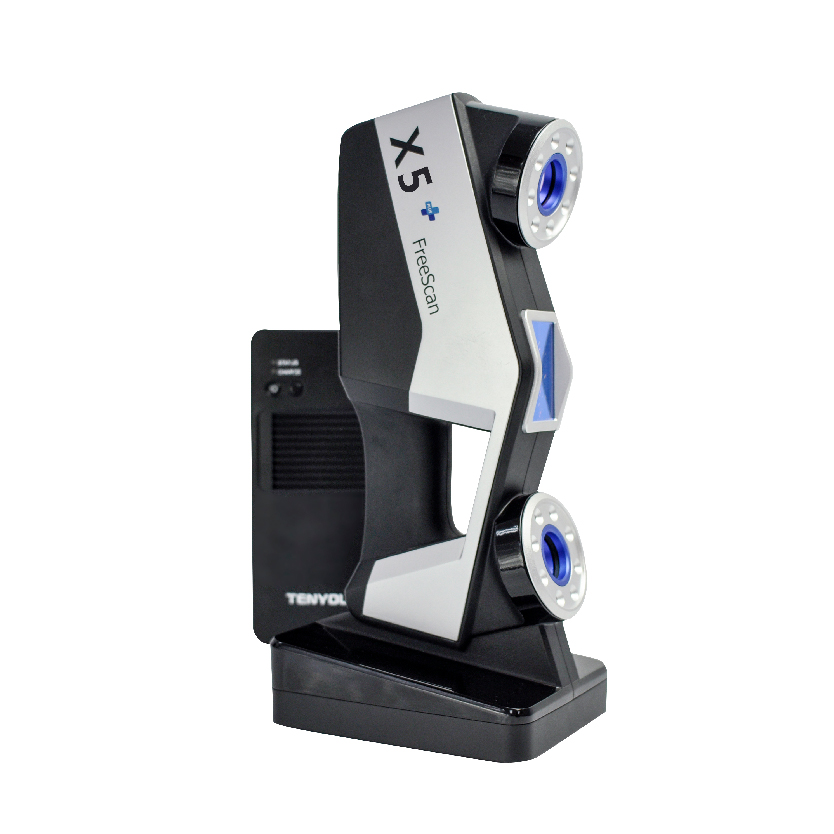 software packages?
software packages?
SA: Of course. Most of our clients use Maya and 3ds Max software solutions in their work. Our software that comes with the hardware supports various 3d formats including .3DS. Most Maya users also purchase CyClise software, which is a powerful package for converting PLY (Cyberware format) files to NURBS, QUADS, SUBD's and organizing polygons.
А.Х.: Is additional lighting required for the correct operation of the scanner?
S.A.: Our equipment is designed to be used in the most ordinary conditions. There are, of course, a number of recommendations. First of all, it is necessary to prevent direct sunlight from hitting the scanning elements of the equipment.
A.Kh.: What is the output texture resolution?
S.A.: The previous model had a resolution of 2000x2000. In general, more detailed information about the previous model is available on our website. As for the new model, the resolution will be about 3072x2048.![]() The new sample is currently being tested.
The new sample is currently being tested.
A.Kh.: How long does it take to correct the material after scanning is completed?
SA: Not much. It takes 17 seconds to scan, the resulting material immediately becomes available for work, thanks to software that immediately "stitches" the received material into a PLV file format.
Let's recap. The total process of scanning a person takes Cyberware's WBX scanner about 17 seconds. On average, the output is a model of 250-300 thousand polygons with a color depth of 8 bits and a resolution along the X axis - 5 mm, along the Y axis - 8 mm, along the Z axis - 0.5 mm. The cost of the device is 240 thousand dollars.
Download the program completely free of charge and examine the sample model obtained as a result of scanning by Cyberware's WBX equipment.
Significantly cheaper to combine several small scanners into one. This method is offered by several companies, including the Canadian company InSpeck. In order to scan a whole person, you will have to purchase 6 scanners, because using only so many devices gives a complete 360-degree view.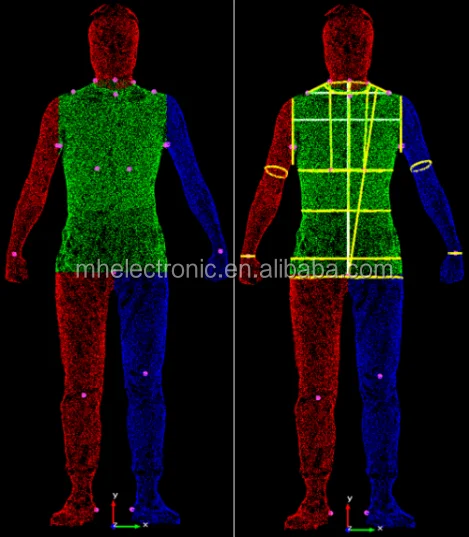 Such a set will cost 120,000 euros.
Such a set will cost 120,000 euros.
InSpeck scanners use directional light from halogen lamps, which has no harmful effects on health. The scanning process takes one second or more, depending on the required resolution. In this case, you can get 550,000 coordinate points, the resolution along the axes varies from 0.03 mm to 3 mm. The advantages of the scanner include a sensor that reads information about texture and color. The kit includes the inSpeck-EM data processing software. It allows you to simplify polygons, edit the received data, convert them to NURBS, and export models to various popular 3D applications: Maya, Max, Lightwave, XSI.
| Realscan 3D Photosensor Technology |
Realscan3D was founded in 2004. Nevertheless, despite such a young age, this studio has managed to gain a serious position in the market for providing 3D scanning services.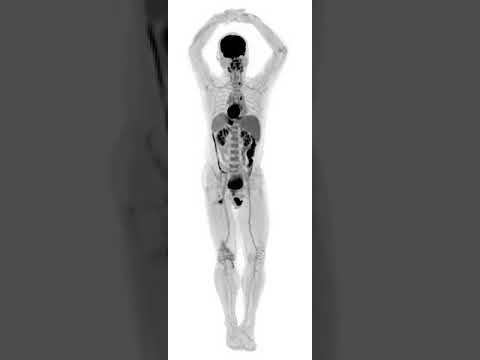 The company, unlike InSpeck and Cyberware, does not sell its equipment and software for 3D scanning, but provides services to large customers from the film industry and game development. Among the latest projects, we highlight the films "National Treasure" and "Aerobatics", as well as the game Spy Hunter: Nowhere to run.
The company, unlike InSpeck and Cyberware, does not sell its equipment and software for 3D scanning, but provides services to large customers from the film industry and game development. Among the latest projects, we highlight the films "National Treasure" and "Aerobatics", as well as the game Spy Hunter: Nowhere to run.
In its work, the company uses a non-contact scanner based on the work of photosensors and a patented object lighting system. The camera takes two pictures per second. The first snapshot scans 90,000 coordinates along the XYZ axes, the second snapshot scans UVs with a resolution of 3072x2048 color map. Thus, by taking a few shots, the studio equipment is capable of producing models with 3 million polygons. At the same time, texture resolution can reach 4096x4096 pixels.
| Mesh optimization with Realscan3D software package |
| In progress Body scanner Vitus pro 8C |
Olympus offers simplified scanners based on photo sensors. At the same time, the quality of the resulting objects is quite acceptable at a relatively low price. In addition, photosensors not only scan shape and color, but also read texture information. The price of this type of scanner varies from $10,000 to $20,000, which is extremely cheap for the film industry, but the quality of the resulting models and textures leaves much to be desired.
At the same time, the quality of the resulting objects is quite acceptable at a relatively low price. In addition, photosensors not only scan shape and color, but also read texture information. The price of this type of scanner varies from $10,000 to $20,000, which is extremely cheap for the film industry, but the quality of the resulting models and textures leaves much to be desired.
It should be noted that when using photosensor scanners, in both cases, a three-dimensional model is obtained by software, after a lot of photos have been taken from different angles. In order to achieve an acceptable result with this scanning method, you need to work hard.
The German company Vitronic produces two models of scanners: 3D Body scanner Vitus pro 8C and 16 C.
These systems are equipped with video (form reading) and photo (color capture) cameras. This device uses a beam, but the manufacturer, quite naturally, claims that their scanning method is absolutely not harmful to the eyes. The scanning process takes 21 seconds at a resolution of 2 mm in the Z axis and 11 seconds at a resolution of 4 mm in the Z axis. Color and texture scanning is possible as an additional option, while the color is fixed at all 3D coordinate points. General indicators of scan data: color depth - 12 bit, resolution along the X-axis - 2 mm, along the Z-axis - 2 mm, along the Y-axis - 2 mm. The device is offered for 150,000 euros. In addition, the buyer will have to pay an additional $ 13,000 for the Human Solutions software package to work with the resulting image and translate it into working 3D formats.
The scanning process takes 21 seconds at a resolution of 2 mm in the Z axis and 11 seconds at a resolution of 4 mm in the Z axis. Color and texture scanning is possible as an additional option, while the color is fixed at all 3D coordinate points. General indicators of scan data: color depth - 12 bit, resolution along the X-axis - 2 mm, along the Z-axis - 2 mm, along the Y-axis - 2 mm. The device is offered for 150,000 euros. In addition, the buyer will have to pay an additional $ 13,000 for the Human Solutions software package to work with the resulting image and translate it into working 3D formats.
Results
There are a fairly large number of companies on the market that are ready to offer their technological and engineering solutions in the field of 3D human scanning. None of the technological solutions is perfect, besides, laser technologies, which give the most acceptable results, are expensive, and therefore difficult to access for small studios just starting their way into the world of big cinema or the gaming industry.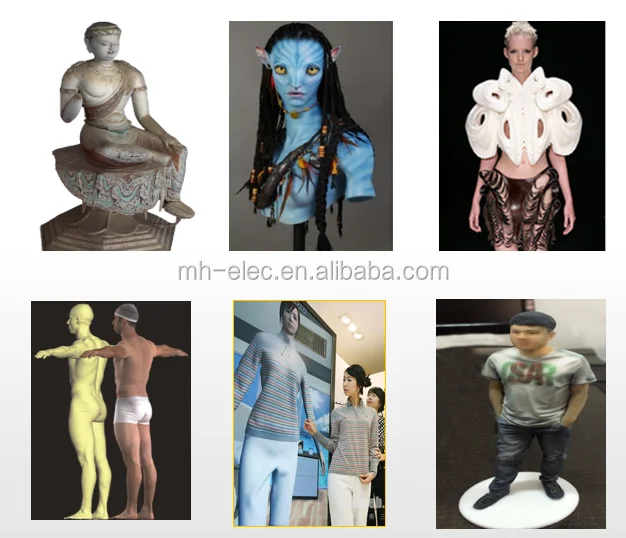 Not a single modern scanner is able to scan a person in such a way that then the intervention of a professional working in specialized software is not required. A good specialist will need several hours to post-process the information received by the scanner, which, of course, is much faster than modeling an object from scratch. But on the other hand, manual modeling is a completely controlled process, unlike the work of three-dimensional scanners, which are unable to avoid mesh breaks, find it difficult to work with complex surface topography, etc. As a result, many models turn out to be quite accurate in form, but with such a bunch of problems that you can forget about high-quality animation. In any case, even if the modeler has to create the model again, the "blank" at hand will speed up the workflow. But is the game worth the candle?
Not a single modern scanner is able to scan a person in such a way that then the intervention of a professional working in specialized software is not required. A good specialist will need several hours to post-process the information received by the scanner, which, of course, is much faster than modeling an object from scratch. But on the other hand, manual modeling is a completely controlled process, unlike the work of three-dimensional scanners, which are unable to avoid mesh breaks, find it difficult to work with complex surface topography, etc. As a result, many models turn out to be quite accurate in form, but with such a bunch of problems that you can forget about high-quality animation. In any case, even if the modeler has to create the model again, the "blank" at hand will speed up the workflow. But is the game worth the candle?
Of course. But only if we are talking about a large project, like a movie or an expensive computer toy, where the photorealism of the characters and the speed of working on them are important.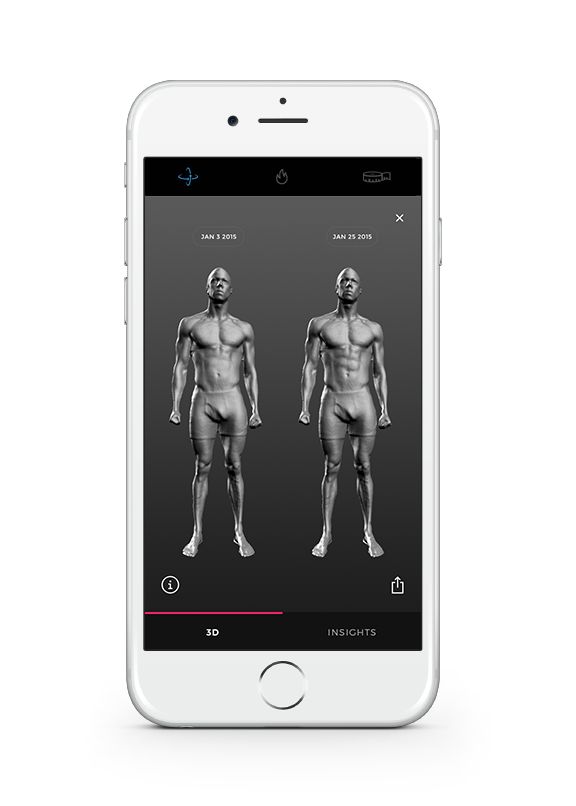 Less ambitious projects can do without 3D scanning technology, because inexpensive scanners are ineffective, as they do not read texture and, most likely, will be an unnecessary appendage to the work of a qualified modeler or designer, rather than a necessary tool that can improve the quality of the model being created.
Less ambitious projects can do without 3D scanning technology, because inexpensive scanners are ineffective, as they do not read texture and, most likely, will be an unnecessary appendage to the work of a qualified modeler or designer, rather than a necessary tool that can improve the quality of the model being created.
P.S. The visual material of the following sites was used in the work on the article:
www.cyberware.com
www.realscan3D.com
www.vitus.de
www.immersion.com
*Richardson R., Scanning space. "Express-Electronics", No. 10/2003
The author thanks Anna Kharkina for assistance in writing the article.
How to quickly create prostheses and other unique products
Reverse engineering
Implementation stories
Medicine
Author: Alexey Chekhovich
Author: Alexey Chekhovich
Video: Real-time 3D Face Scan | Order a free test scan | 3D scanner helps victims | 3D scanning of the human body in great detail
3D Prosthetic Design: Era of New Possibilities
As technology improves and becomes more accessible, there are new opportunities to solve the most complex medical problems. A team of researchers from the company Chabloz Orthopedie (France) managed to create a unique and truly revolutionary prosthesis.
A team of researchers from the company Chabloz Orthopedie (France) managed to create a unique and truly revolutionary prosthesis.
Chabloz Orthopédie worked with Denis Gauthier, who had his forearm amputated. First, the experts performed a 3D scan of the patient's healthy arm using a peel 3d scanner to obtain its mirror image. This was done so that the designed product ideally repeated the proportions of a healthy limb. The rest of the amputated arm was also scanned to achieve a comfortable and ergonomic fit for the prosthesis.
Denis Gaultier with finished prosthesis
The team then proceeded to design a CAD model and develop a myoelectric prosthesis. Batteries, sensor cables and an artificial hand were integrated with the fabricated forearm. The prosthesis itself was designed in CAD and printed on a 3D printer. HP Jet Fusion technology was used to print various components of the forearm. After manufacturing, all parts were finished and painted.
The use of 3D scanning and 3D printing guarantees not only the correct fit of the fixture, but also gives complete freedom of movement. A new approach to prosthesis design allows professionals to develop solutions that are lightweight and highly customizable. Did you know that 3D printed parts are 20% lighter than their carbon or fiberglass counterparts? Such products also have the necessary rigidity, hardness and durability.
A new approach to prosthesis design allows professionals to develop solutions that are lightweight and highly customizable. Did you know that 3D printed parts are 20% lighter than their carbon or fiberglass counterparts? Such products also have the necessary rigidity, hardness and durability.
Later, this innovative prosthesis was combined with the BeBionic hand, one of the most advanced bionic limbs, and a state-of-the-art myoelectric forearm and hand was custom-made. Gauthier's case is a great example of the innovative use of 3D measurement and 3D printing technologies.
The video shows the complete process of digitizing the face and ears using the Creaform Go!SCAN 20 portable 3D scanner (its analogue in white peel 2 is now being produced).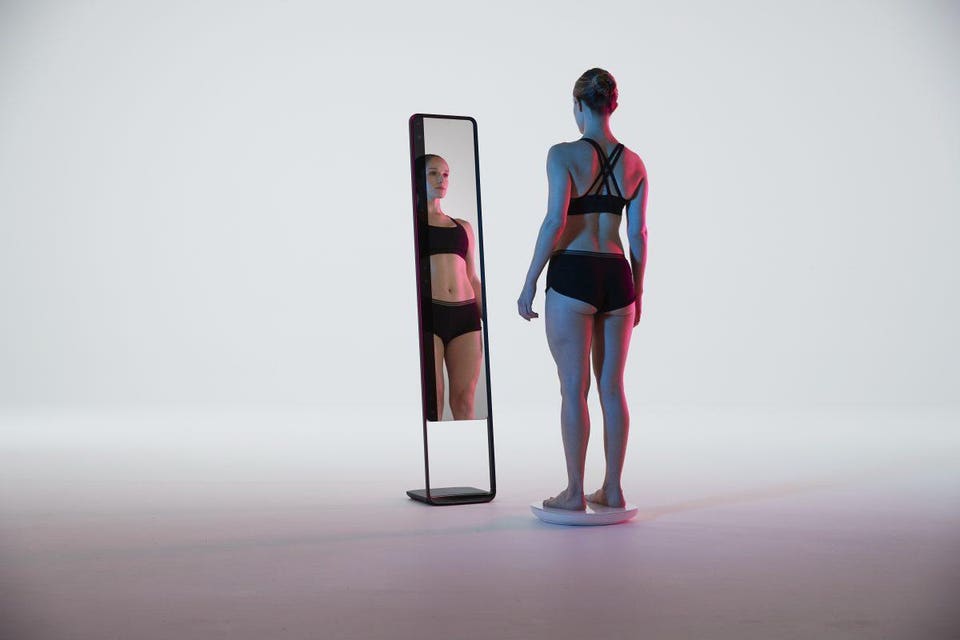 This solution provides a detailed digital model for use in areas such as plastic and reconstructive surgery, in particular, facial prosthetics.
This solution provides a detailed digital model for use in areas such as plastic and reconstructive surgery, in particular, facial prosthetics.
Order a test 3D scan for free!
3D scanner helps victims
Unfortunately, tragedies inevitably occur around the world, and those affected need help. But, fortunately, there are organizations such as Médecins Sans Frontières (Doctors Without Borders) that do their best to provide them with the necessary treatment and care. Since 2016, the organization has been working tirelessly to solve the problem of providing prostheses to those in need around the world. The goal is to help amputees regain independence. The solutions that are used in this case are 3D technologies.
Upon completion of the medical examination of the patient, doctors determine his needs and expectations. Using the peel 3d scanner, with minimal discomfort for the victim, a high-precision digital model of the injured limb is created. Compared to traditional impression making, 3D scanning is significantly faster and does not require contact. The result of the 3D scan is then transferred to the virtual sleeve and prosthesis design software. The developed component is made on a 3D printer and installed on the patient's limb. If necessary, during the installation process, the prosthesis and sleeve are finalized. After three months of use, the patient is invited to evaluate the comfort of the prosthesis.
Compared to traditional impression making, 3D scanning is significantly faster and does not require contact. The result of the 3D scan is then transferred to the virtual sleeve and prosthesis design software. The developed component is made on a 3D printer and installed on the patient's limb. If necessary, during the installation process, the prosthesis and sleeve are finalized. After three months of use, the patient is invited to evaluate the comfort of the prosthesis.
MSF has also developed a similar procedure to create compression masks for burn patients. Here, the use of non-contact technology also provides significant advantages over traditional plaster bandages, not only making the procedure less painful for the patient, but also speeding it up, allowing for a much larger number of people in needy countries to be treated.
Physiotherapist Pierre Moreau scans a patient with head burns. Then, based on the scan, a transparent pressure therapy mask is created / Photo: Elisa Oddone, Al Jazeera
Pierre Moreau, a physiotherapist from Médecins Sans Frontières, says: “The purpose of the 3D project is to help patients in need of special rehabilitation care.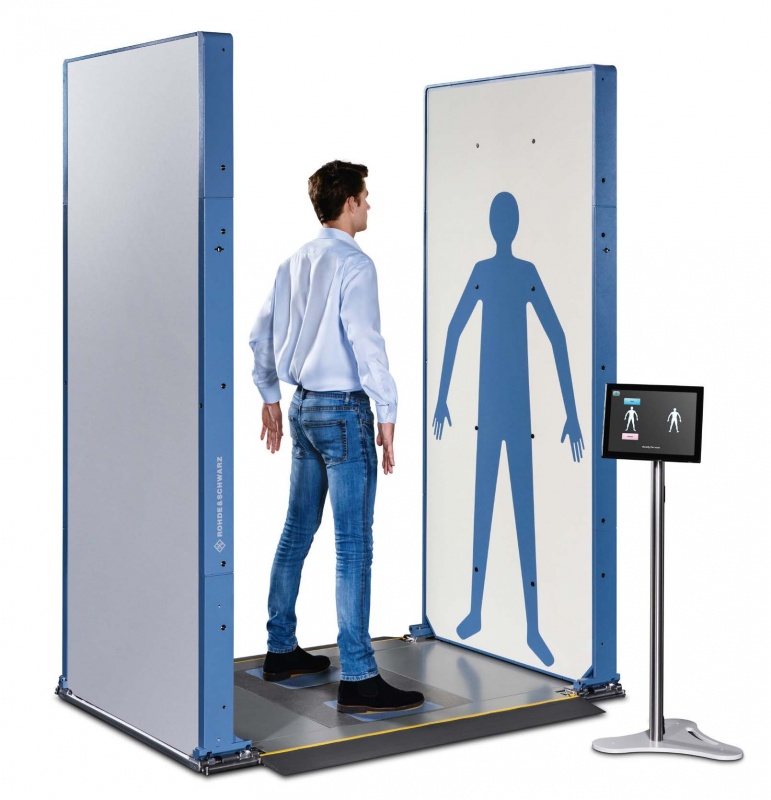 We launched this project in Amman in 2017, where we started providing upper limb amputees with 3D printed prostheses. But simply printing a prosthesis is not enough - we try to understand the needs of the victims, find individual solutions and keep them in their new position for as long as possible. We are assisted by an interdisciplinary team of rehabilitation workers and engineers. Then our specialists helped more than 30 patients in Jordan.
We launched this project in Amman in 2017, where we started providing upper limb amputees with 3D printed prostheses. But simply printing a prosthesis is not enough - we try to understand the needs of the victims, find individual solutions and keep them in their new position for as long as possible. We are assisted by an interdisciplinary team of rehabilitation workers and engineers. Then our specialists helped more than 30 patients in Jordan.
In 2018, we began to use the technology in another direction - for patients with burns, especially on the face and neck. Skin complications are a very serious problem for burn victims. Hypertrophic scars may form, and pressotherapy is needed. This requires transparent masks, but they are quite difficult to produce on site. Therefore, we started to explore 3D scanning, 3D printing and computer modeling in an attempt to help our team in the production of these devices for patients who so desperately need them. Now we provide more than 50 transparent facial orthoses.
When I think about this project, I always remember one story that demonstrates its development. In 2017 in Jordan, we had a small patient with burns and an amputation - she had no arm, and the condition of her remaining part was too complex to develop a prosthesis. Then we couldn't help her. But she came back the following year and we were finally able to make a prosthesis for her. For the first time, she was able to use her hand. This is one of our best memories of the project and a measure of its success.”
3D scanning of the human body in great detail
There are already more than 7.5 billion people on Earth, and although some are very similar to each other, there are no completely identical people. With such a variety of faces, it is not at all surprising that in the process of evolution the human brain became masterfully recognizing the smallest details that help to distinguish them. To get as close as possible to the original, the 3D scan of the statue must be extremely accurate and have a high geometric resolution.
3D copies: 2013 Kinect scan (left figure) and peel 3d (right figure)
To improve the quality of scanning, the Canadian company USIMM has begun using peel 3d. The company specializes in the machining of non-metallic materials and is constantly involved in artistic projects. The main goal was to show the evolution of CNC machining by comparing the results of a 3D version of one employee made a few years ago with current results.
According to USIMM's Leia Lepage, scanning a living person is not an easy task: “Scanners are usually quite sensitive to the smallest movements, even if it's just breathing. Scanning a person is very difficult.” In order to accomplish such an extraordinary task, the USIMM team needed a 3D scanner that was immune to certain movements - but at the same time had high resolution and accuracy. Peel 3d possesses such qualities: a resolution of up to 0.5 mm and a volumetric accuracy of 0.5 mm/m.
The team scanned the same employee in the same pose as they did a few years ago.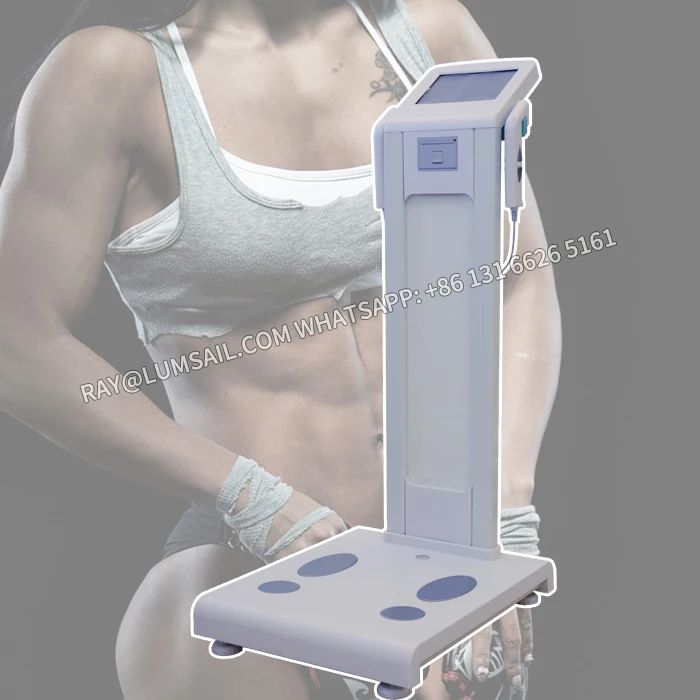


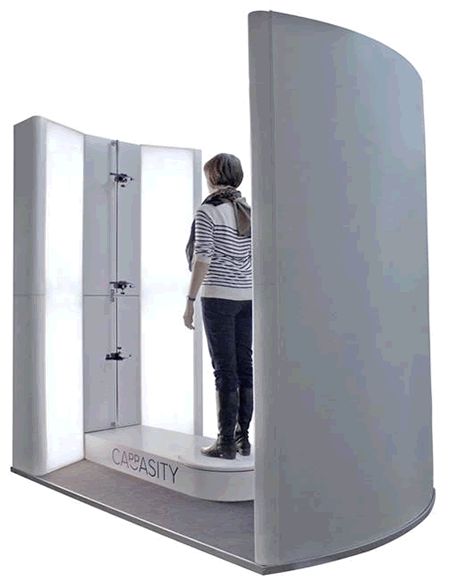 3D scanning by Gentle
3D scanning by Gentle 
